2 Days In Dublin Itinerary: A Guinness-Fuelled Weekend
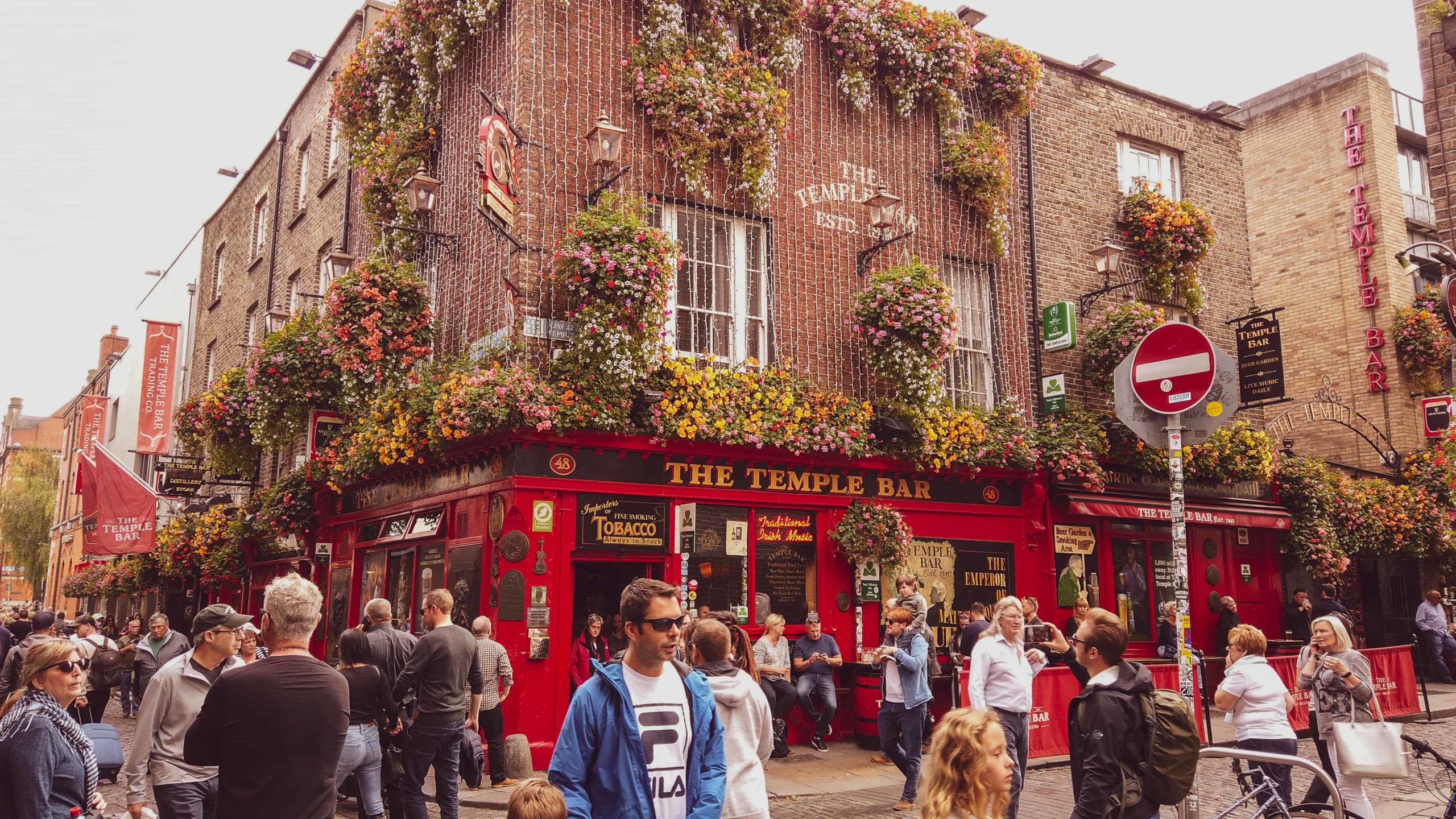
Spending at least 2 days in Ireland’s capital city has been on my travel list since I visited St. John’s & Fogo Island in Newfoundland & Labrador. Now that I’ve done it, I’ve compiled our trip into a handy itinerary for you.
In the 1800s, thousands of Irish immigrants came to these shores seeking a new life, and their culture and traditions have been carried down through the centuries. While in this province, I learned of the deep-rooted connection between East Coast Canada and Ireland.
Dublin is a lively city boasting a rich history, delicious food, legendary whiskey and Guinness, and much more. You’ll see lots to do and see in this city.
Spend two days in Dublin, Ireland, and you’ll be immersed in this fantastic city’s vibrant culture, stunning architecture, and dynamic atmosphere. From the breathtaking views of the River Liffey to the cobblestone streets of Temple Bar, there’s something for everyone in this unique destination.
Whether you want to visit world-class museums and galleries or wander through the picturesque parks and lively markets, two days is enough time to get a taste of everything Dublin offers.
Subscribe to our YouTube Channel for more in-depth stories and interviews.
How Many Days in Dublin is Enough?
One question I get asked a lot: “Is 2 days in Dublin enough?” The answer is yes. My itinerary is a combination of walking and the hop-on-hop-off bus.
You’ll be able to see the main sights and attractions, including the extra hours you’ll spend at the Guinness Storehouse or any pub. That said, like most short trip itineraries, lesser-known sights, hidden gems, and some highly recommended day trips, you will require more than 2 days.
What to do in Dublin for 2 Days
Welcome to Dublin! Explore the city of a thousand welcomes on this two-day trip. Take in the sights and sounds of one of Europe’s most vibrant cities, from its bustling streets to its ancient castles.
Soak up Ireland’s rich history and culture as you wander through parks, museums, and pubs. Whether you’re looking for adventure or want to relax, there’s something for everyone in Dublin. Get ready for an unforgettable journey.
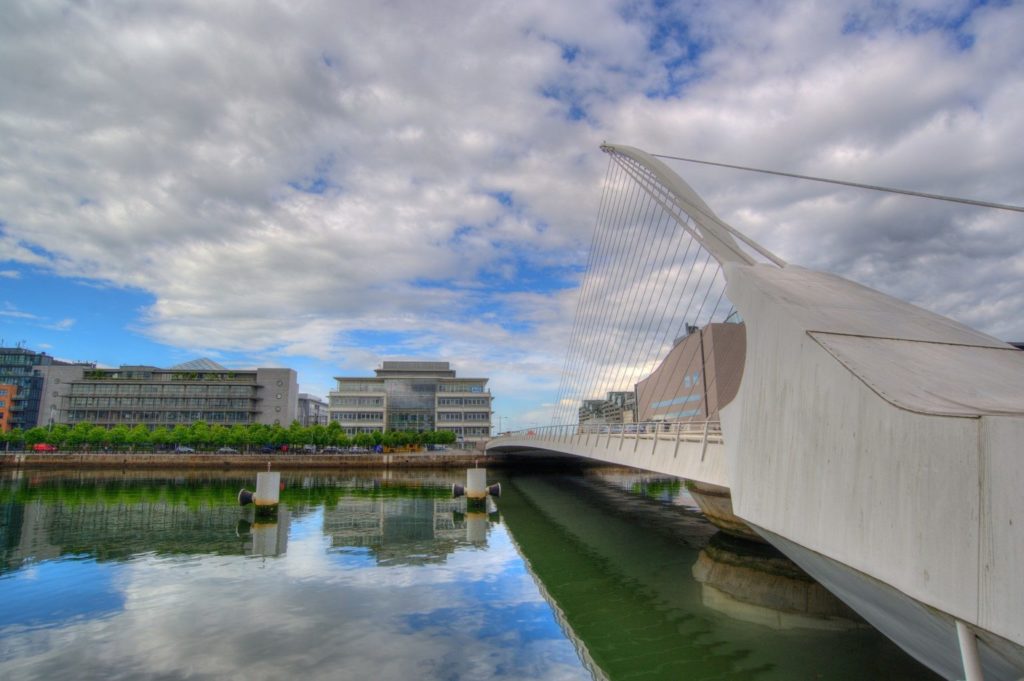
Day One: Visit Dublin’s Top Attractions
Day one includes plenty of history and culture. Stop in at important Dublin buildings and spot landmarks as you make your way from point A to point B. And be sure to fill up on good food and coffee.
Coffee & Breakfast at Beanhive
Located on the St Stephen’s Green side of Dawson Street, Beanhive is a hidden gem known for its incredible coffee art and large portions of Irish and vegan breakfasts.
This adorable coffee shop has many options (think cappuccino, matcha latte, mango chai, and Suki tea) but minimal seating. Luckily, you can order on the go and enjoy your delicious treats elsewhere – perhaps in St Stephen’s Green Park?
Morning Browsing of The Little Museum Of Dublin ☘️
This little museum tells the extraordinary history of the city of Dublin. The museum started in 2011 with a public appeal for historical objects, which resulted from the Irish people’s remarkable generosity.
Today there are over 5,000 artifacts in the collection, and it was recently voted as “Dublin’s best museum experience” by the Irish Times. This Dublin attraction is open seven days a week from 9.30 to 17:00.
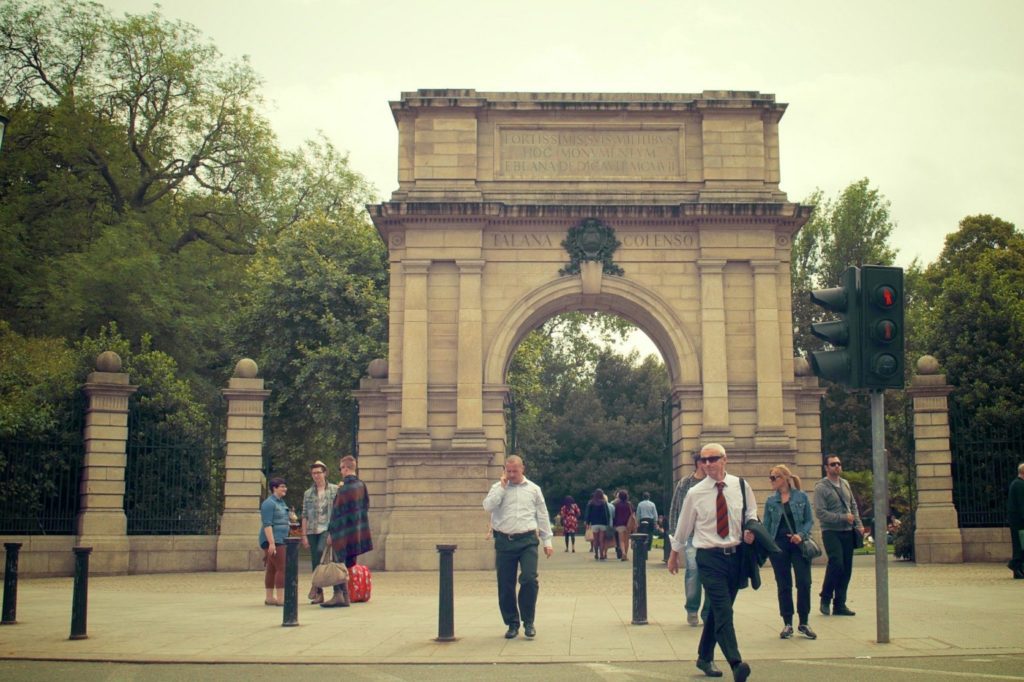
Organize Attraction Passes at The Dublin Visitor Centre ☘️
The Dublin Visitor Centre, 118 Grafton St, Dublin 2.
The Dublin Visitor Centre, located at 118 Grafton Street, it’s just across the street from Trinity College’s entrance – making it the perfect first stop.
As we only had 2 days in Dublin and were planning on visiting various attractions scattered throughout the city (some of which had set tour times, like the Guinness Storehouse), I opted for the 48-Hour Dublin Pass.
This Pass includes free entry to over 30 of Dublin’s top attractions, monuments, and museums, plus free rides on the 24-Hour Hop-On-Hop-Off with Big Bus Tours Dublin. It also gave us a much-needed, guaranteed fast track at the Guinness Storehouse.
Tip: If you want to buy your city pass before you arrive, you can purchase it online for convenience.
**I indicated all of the places listed in this itinerary included on the Dublin Pass with a “☘️ ” – I thought that was fitting**
While here, we also secured our bus tickets for our Day Trip to The Cliffs Of Moher.
A Stop at The Famed Trinity College
Founded in 1592 by the first Queen Elizabeth, Trinity is the oldest standing college in Ireland and the only college of Dublin University.
This top Irish University boasts spectacular architecture and landscaped gardens dotted with statues and has a rich history. You could easily spend hours wandering around the campus, admiring the views.
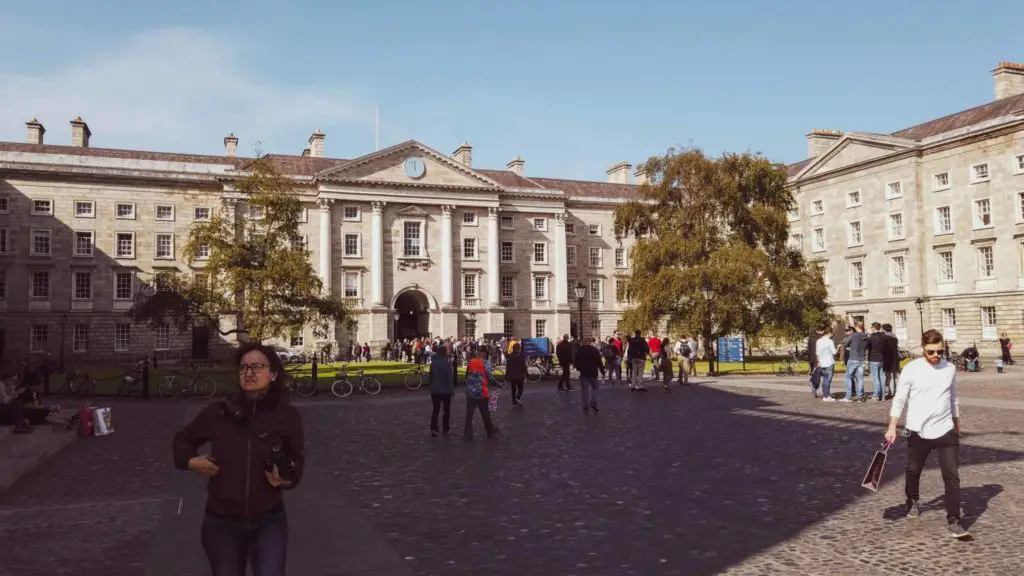
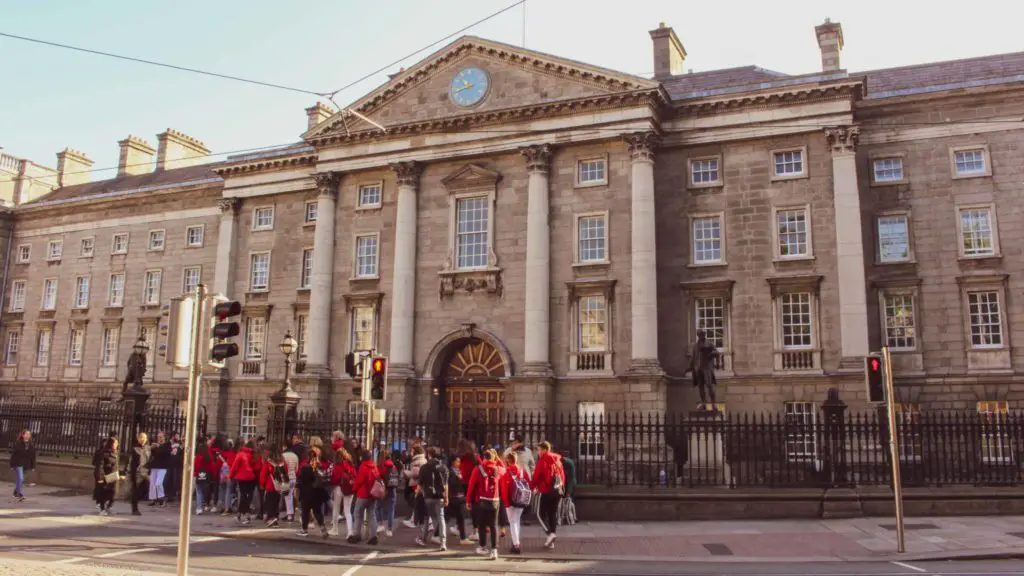
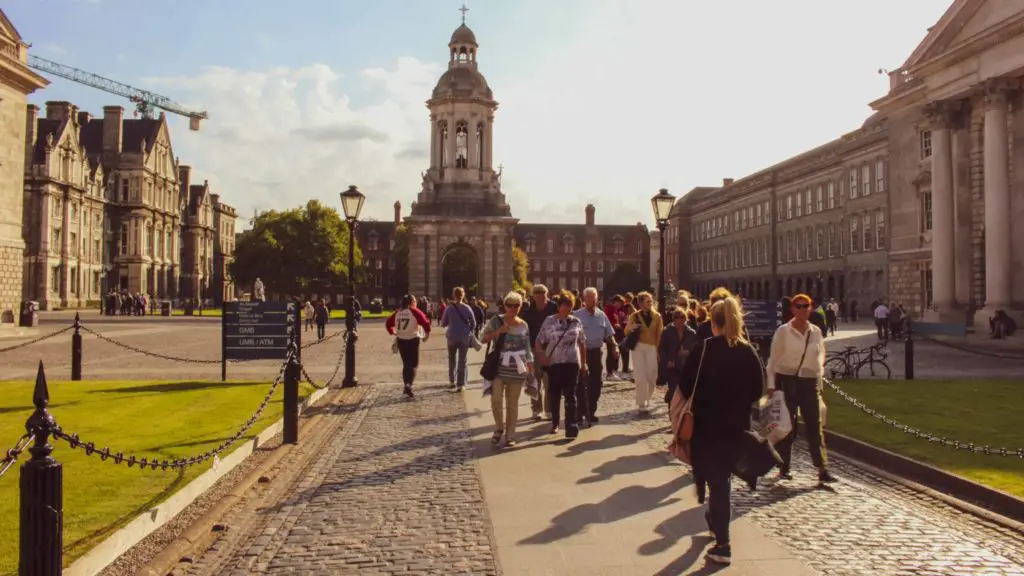


Don’t Miss Viewing Sphere Within Sphere
While on the Trinity College campus, check out the “Sphere Within Sphere,” or “Sfera con Sfera” in Italian. You’ll find this bronze Globe outside the Main Library, beside the centuries-old Museum Building.
The Italian sculptor, Arnaldo Pomodoro, created and donated this artwork to the college in 1982. It’s one of a series of sculptures scattered across a few European cities.
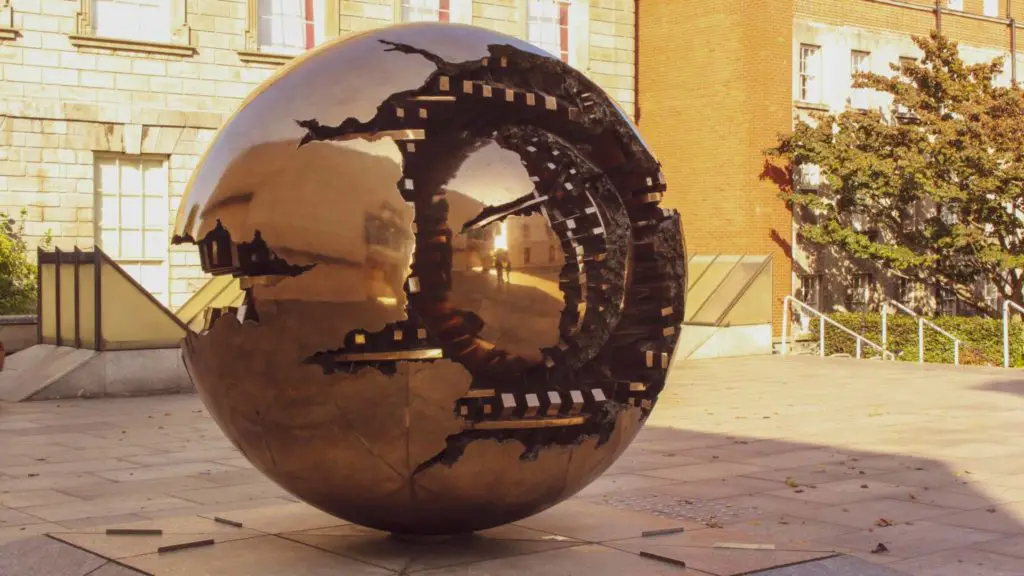
See The Book of Kells in The Long Room Of The Old Library
As you step into the 20 ft Long Room of The Old Library, you’ll be mesmerized by its beauty. Built during the early 18th century by Thomas Burgh, this barrel-vaulted library holds some of Trinity College’s most renowned treasures.
With over 200,000 books packed across the two floors, this place is a paradise for bookworms. You’ll find several rare copies of books such as the Proclamation of the Irish Republic. However, the star of the show is The Book Of Kells.
This 680-page book is not only the world’s oldest book but also the most famous. The Book of Kells contains the first four Gospels of the Bible in Latin, making it the most elaborate manuscript of its kind in existence from the early Middle Ages in excellent condition.
It was completed way back in 800 AD by monks at a monastery on a coastal island off Scotland. Repeated Vikings’ raids forced the monks to abandon their homes and find shelter in Kells in Ireland. The Book of Kells was then brought to the Old Library for safekeeping in the mid-1600s, and today, over half a million tourists come to see this relic each year.
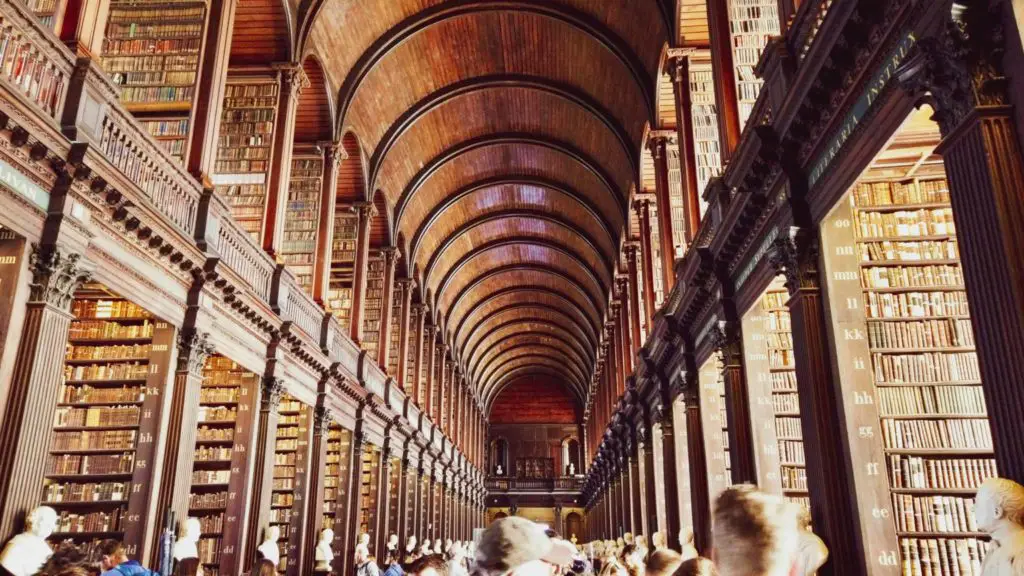
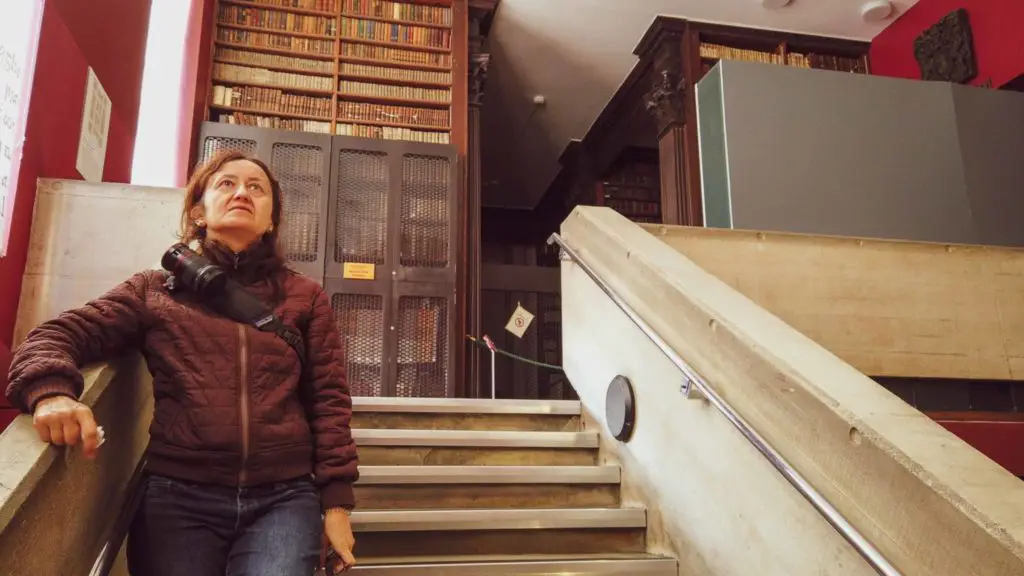
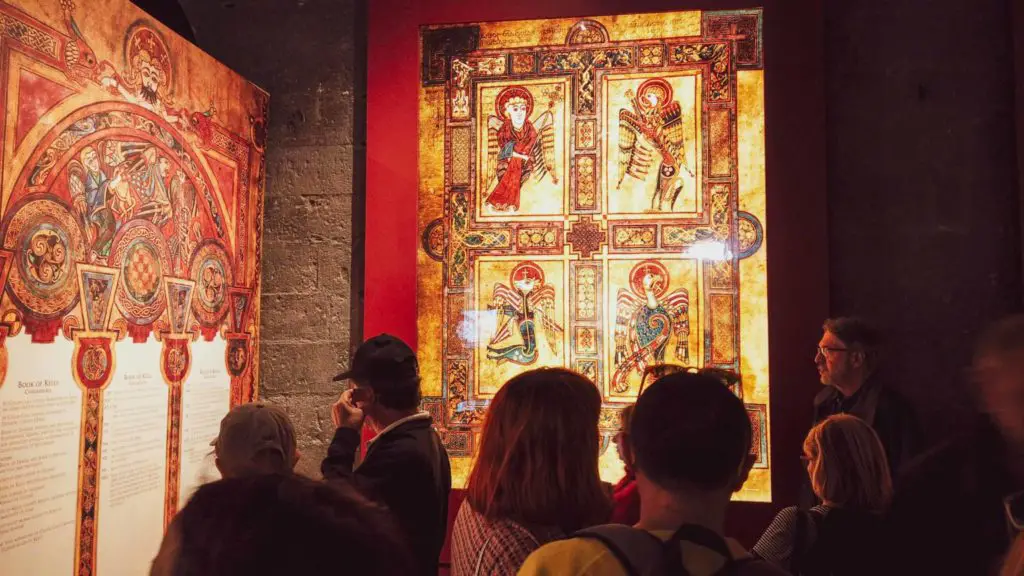
Cross Over Ha’penny Bridge
Made of cast iron from England, Ha’Penny is a single elliptical iron arch bridge built in May 1816 over the River Liffey here in Dublin. Ha’Penny is just a nickname; it’s technically called Liffey Bridge.
It was given this name because, 100 years after its completion, people were charged a Ha’Penny (a British pre-decimal half pence coin) to pass through the toll and cross the bridge. At the time of operation, turnstiles were at both ends of the bridge.
Luckily, it’s free to cross Ha’Penny Bridge today, and it will offer you some gorgeous views of the city during your two days in Dublin.
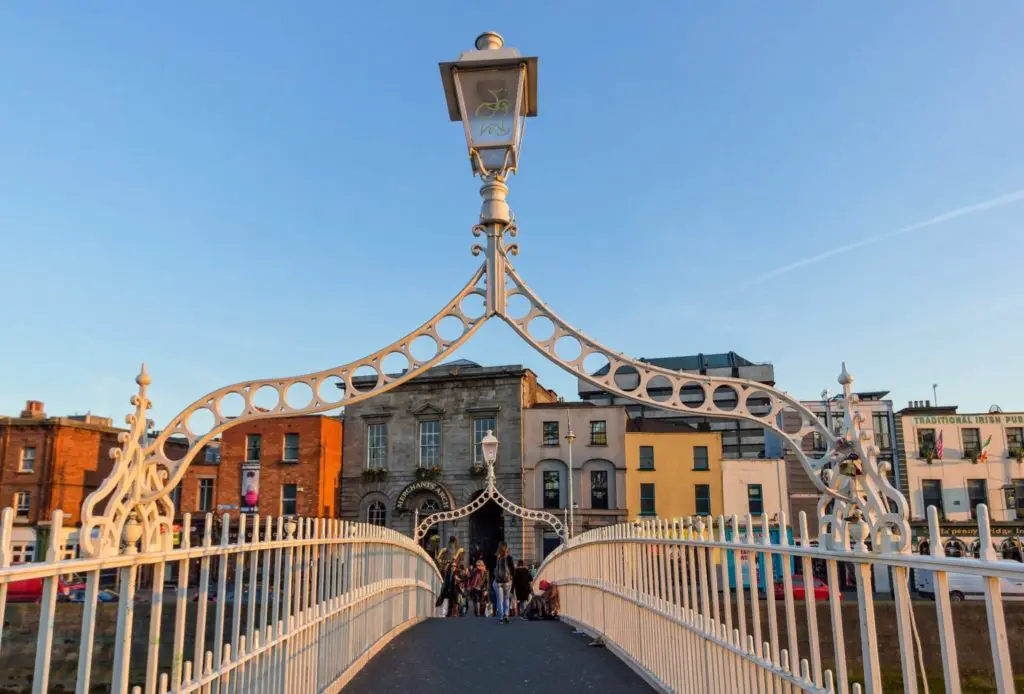
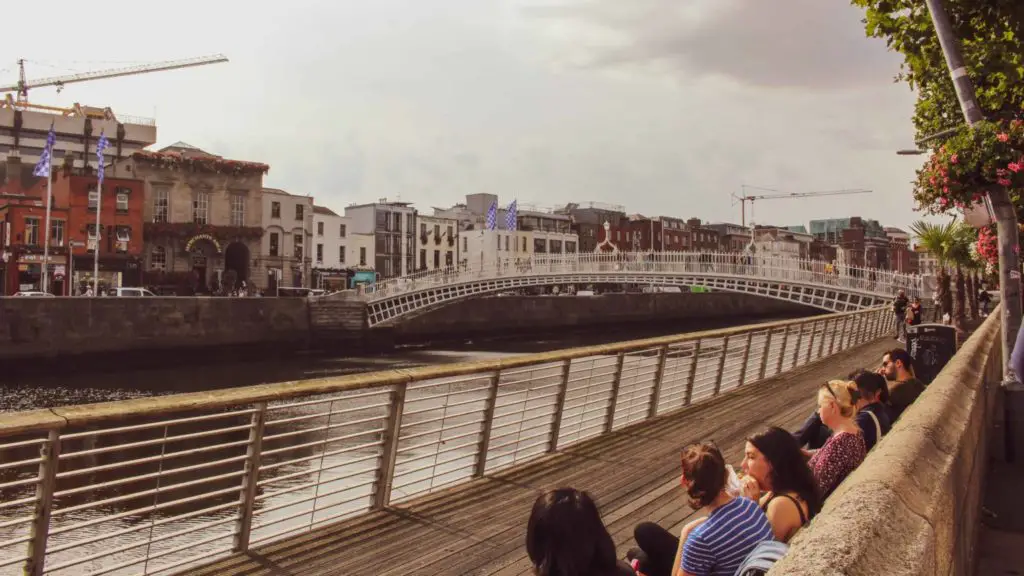

Shop in The Temple Bar Neighborhood & Stop at The Temple Bar
The next stop on this Dublin Itinerary is the trendy riverside neighbourhood of Temple Bar. This area almost always feels electric with the bustle of locals and tourists. As you stroll across the cobbled pedestrian lanes, you’ll encounter numerous crowded bars playing live Irish folk music or DJs spinning the latest tunes.
Tons of restaurants serve not only Irish food but also Asian, American and other delicious cuisines worldwide. You’ll also love the multitude of clothing and craft boutiques filled with locally designed products – Temple Bar is the perfect place to find some unique souvenirs. It’s also an ideal location to go bar hopping – with pubs like The Porterhouse and The Foggy Dew and Czech; you’ll undoubtedly have a blast!
However, the most famous pub in the area is The Temple Bar. This fiery red pub is trendy, so be prepared to wait – it’s worth it! If whiskey is your thing, you will appreciate that this bar owns one of Ireland’s most extensive whiskey collections. It has over 450 bottles of Irish whiskey, Scotch, and Bourbons.
Also located in the Temple Bar neighbourhood is The National Photographic Archive, which looks at Ireland’s past, while the Project Arts Centre and Temple Bar Gallery + Studios show contemporary art.

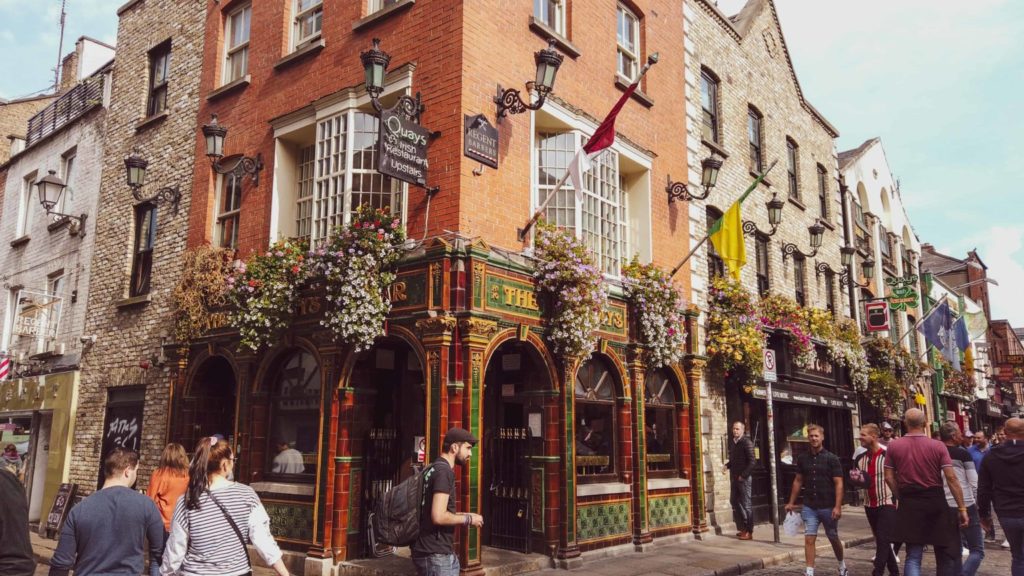
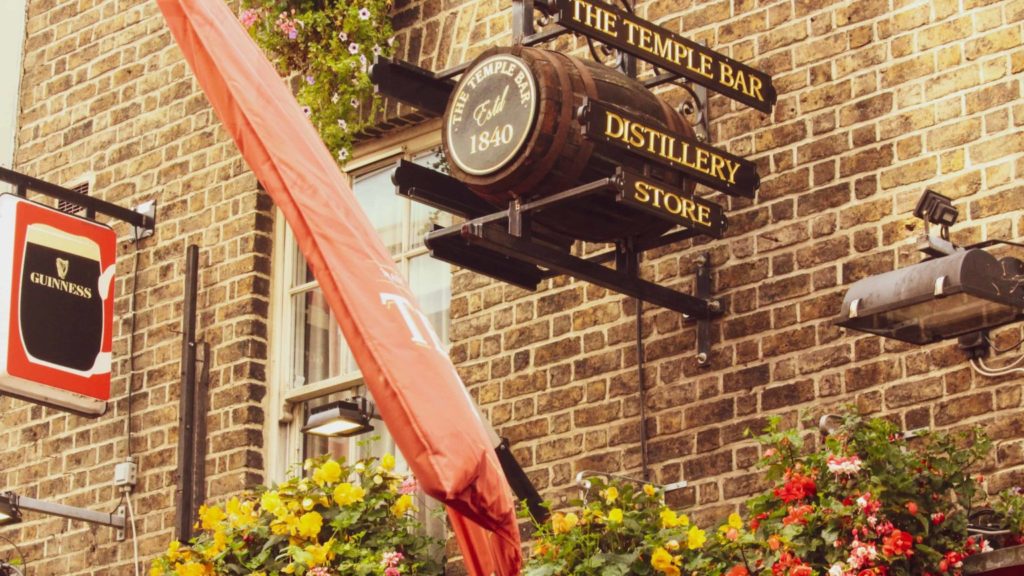
Lunch at The Brazen Head
The Brazen Head has a reputation for being the oldest pub in Ireland. Legend has it that this site has housed a tavern or alehouse since 1198.
The building you see when visiting today was built in 1754 and was originally a coaching inn – a modern-day Airbnb for both people and horses. During an excavation of the land immediately adjacent to the pub, there was evidence that the area had been in use as early as the 13th century.
Today, Brazen Head is a popular and lively place that boasts good food and even better beer. Depending on which evening you stop by, you could experience traditional folk music performances or even storytelling by locals.
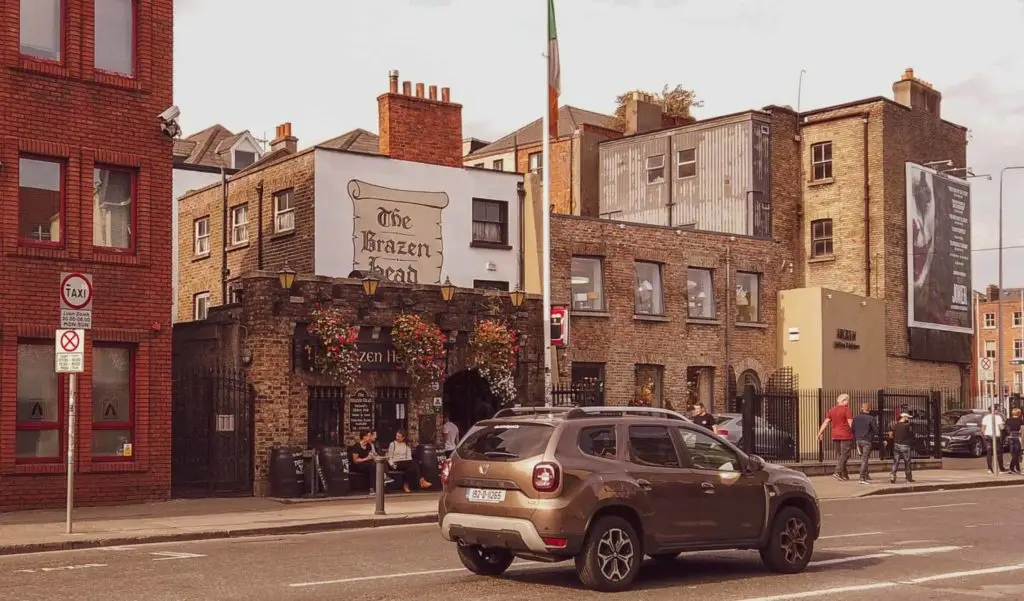
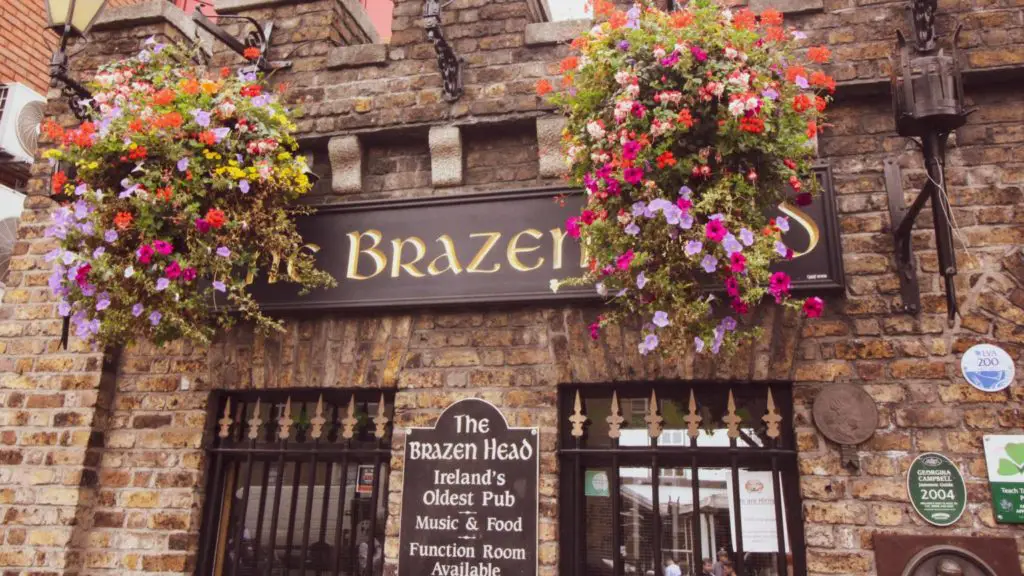
See Old Dublin City Wall
As I mentioned earlier, Dublin was a walled city along the River Liffey banks during Viking times. This explains the Old Dublin City Wall, built in 1240 AD, located here on Cook Street.
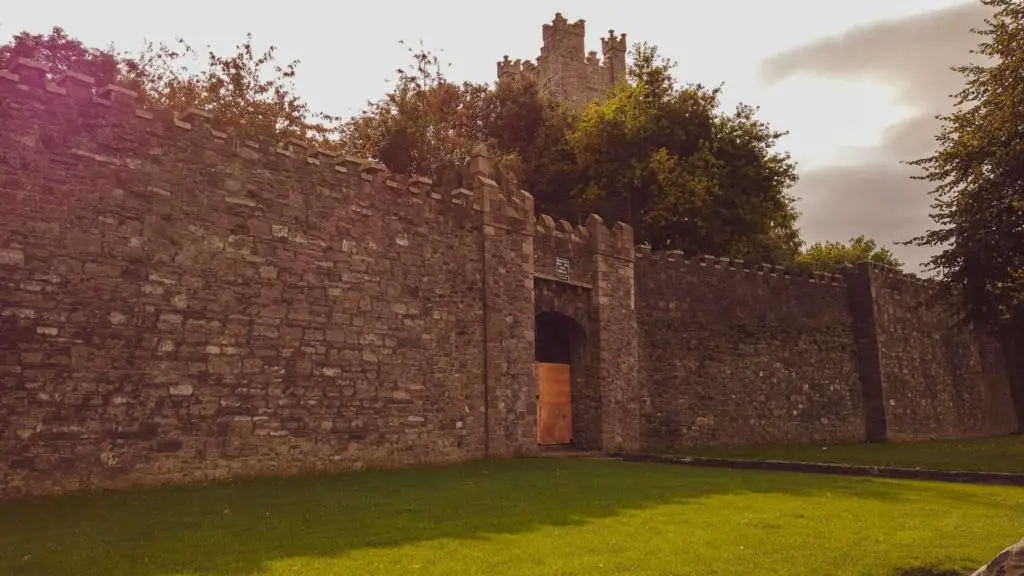
Snap a Pic of Christ Church Cathedral ☘️
Christ Church Cathedral is Dublin’s oldest medieval cathedral. The Gothic / Romanesque construction was founded in 1030 and is the seat of the Church of Ireland and the Roman Catholic church in Dublin.
You might recognize it from the hit Showtime TV series The Tudors, as many scenes from the show were filmed on-site. You can buy your tickets online or in person, and it’s free to holders of the Dublin Pass.
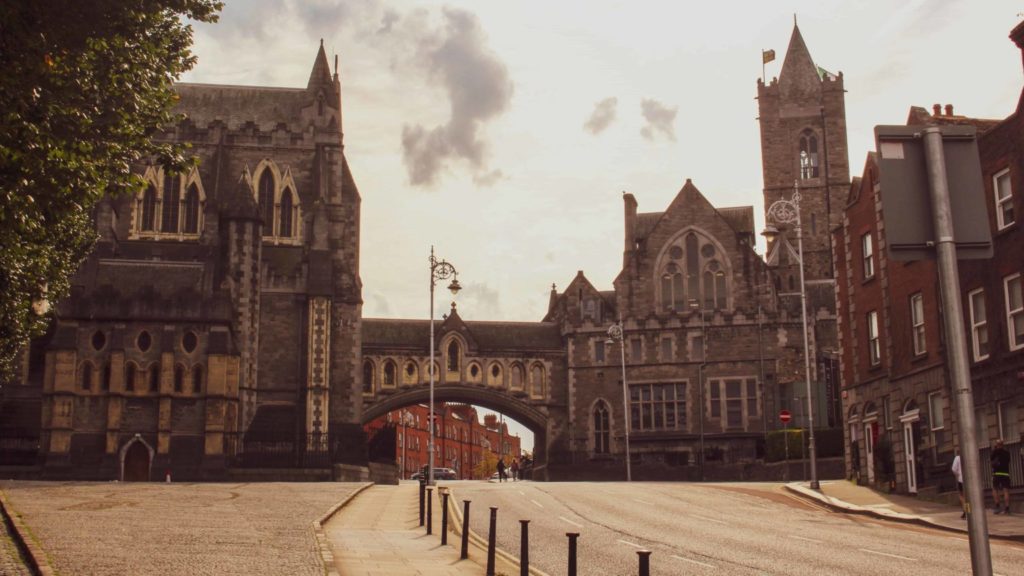
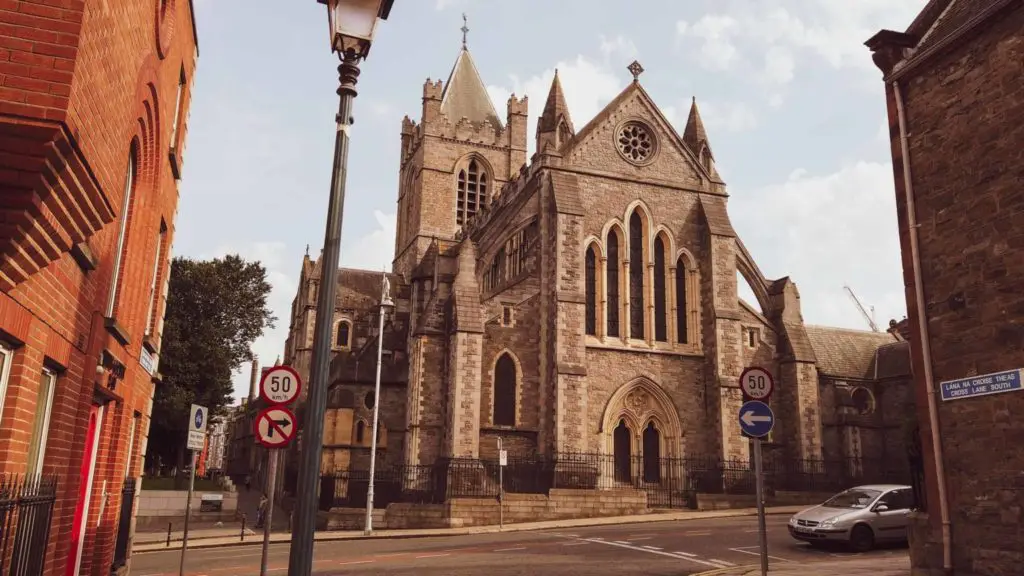
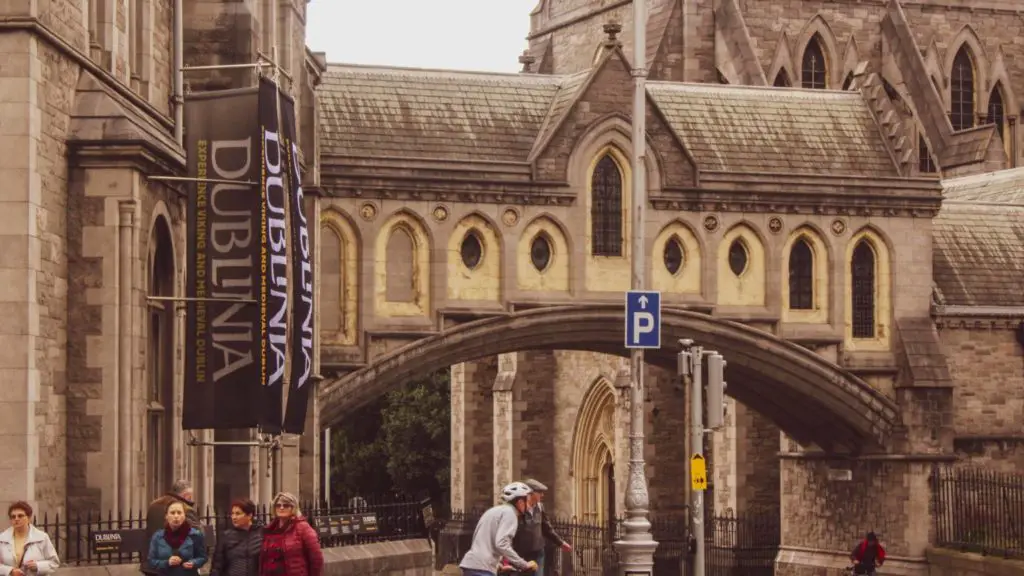
Stop in at Dublinia ☘️
Right beside Christ Church Cathedral in the heart of medieval Dublin is Dublinia. This museum tells the story of the Viking and medieval eras in Dublin. The educational experience will give you a glimpse into the past, with Viking ships, weaponry, and clothing. Learn about medieval times, the people, how they lived what their punishment was like.
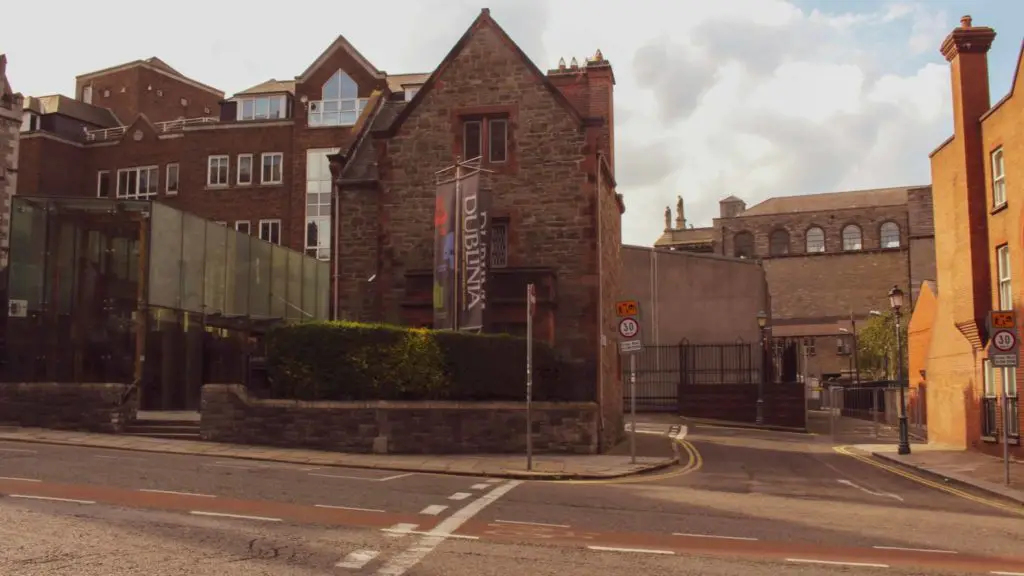
Admire St. Patrick’s Cathedral ☘️
St. Patrick’s Cathedral is the tallest and the largest church in Ireland, thanks to its 43-meter spire. It houses the remains of author Jonathan Swift who wrote Gulliver’s Travels – Gulliver, also the name of a street I grew up on as a kid back in Toronto. It is the only cathedral in Ireland that offers daily sung services.
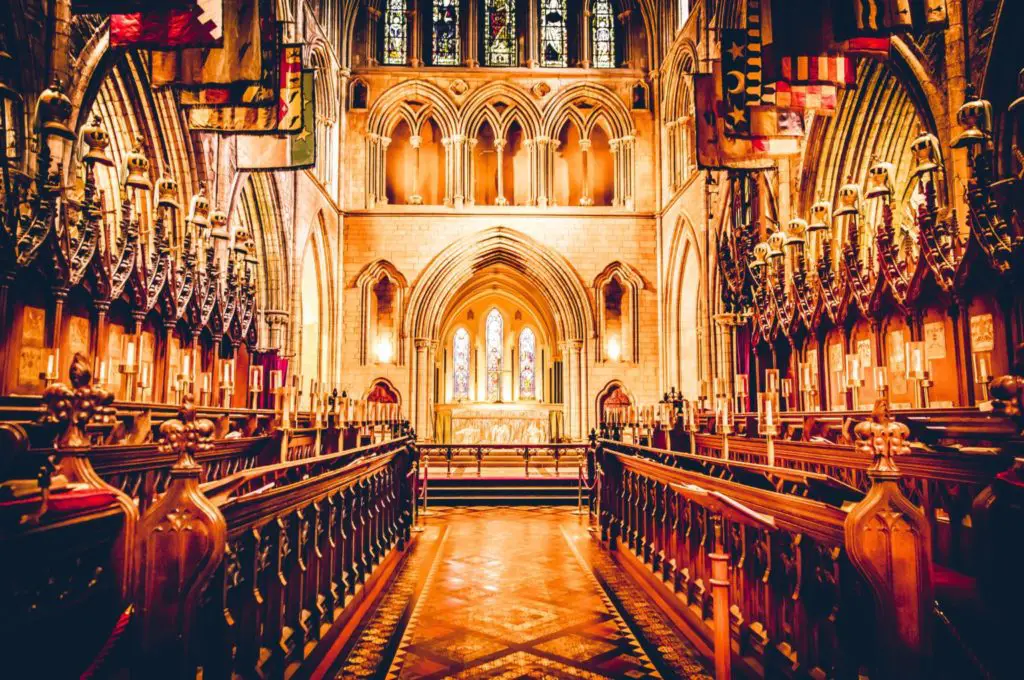
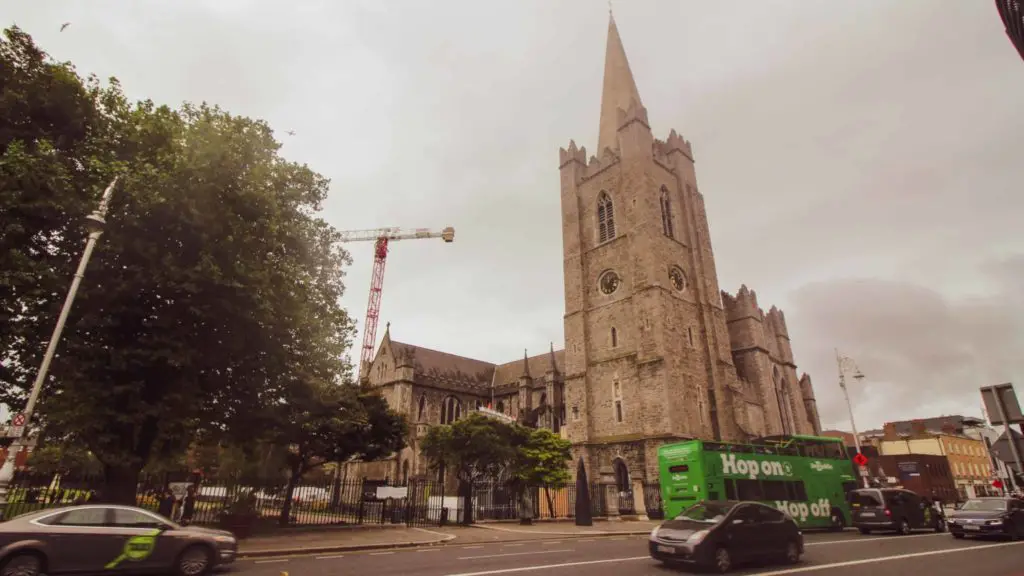
Don’t Forget to Swing Passed Dublin City Hall ☘️
Dublin’s City Hall was built in the 18th century and is an excellent example of 18th-century Georgian architecture, and took about ten years to finish. It was initially created as the place to exchange the Irish punt for the English sterling.
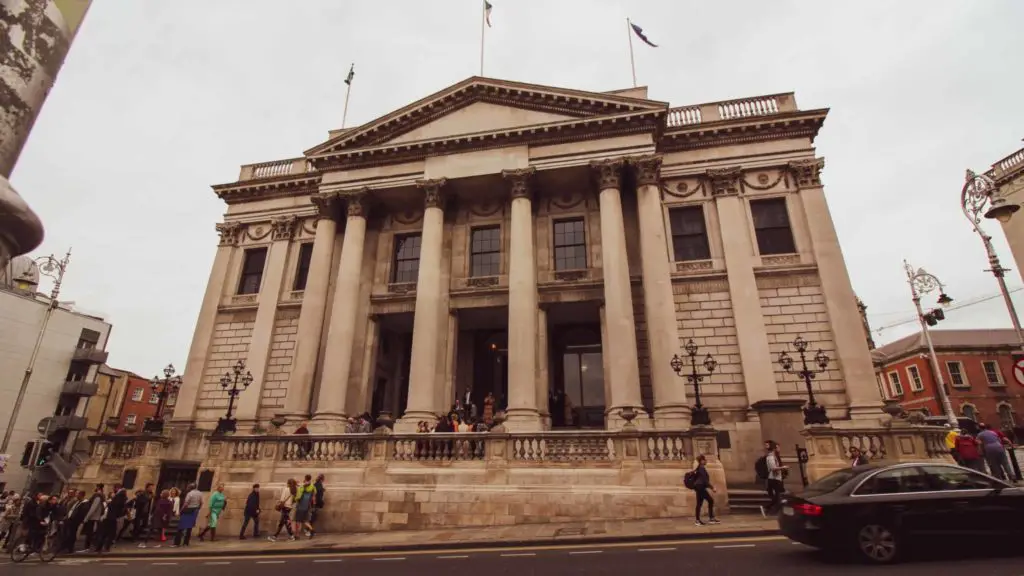
Tour Dublin Castle & Its Grounds ☘️
There has been a castle on this site since 1166, but the funny thing is, the only part of Dublin Castle that looks like a castle is the Record Tower, which dates back to 1228. The rest of the Dublin Castle complex is home to several government buildings like the Irish government State Apartments, used for official state engagements. You’ll also find the Garda (Irish police) Museum and the Chester Beatty Library museum inside the castle.
While you can admire the castle’s exterior, taking a guided tour inside the building will allow you to learn more about Irish history. If you have the time, you should consider stopping by the castle’s gardens on the Royal Chapel’s south side. The Dublin Gardens include a sprawling lawn, sculptures, a mini ‘four seasons’ garden, and more.
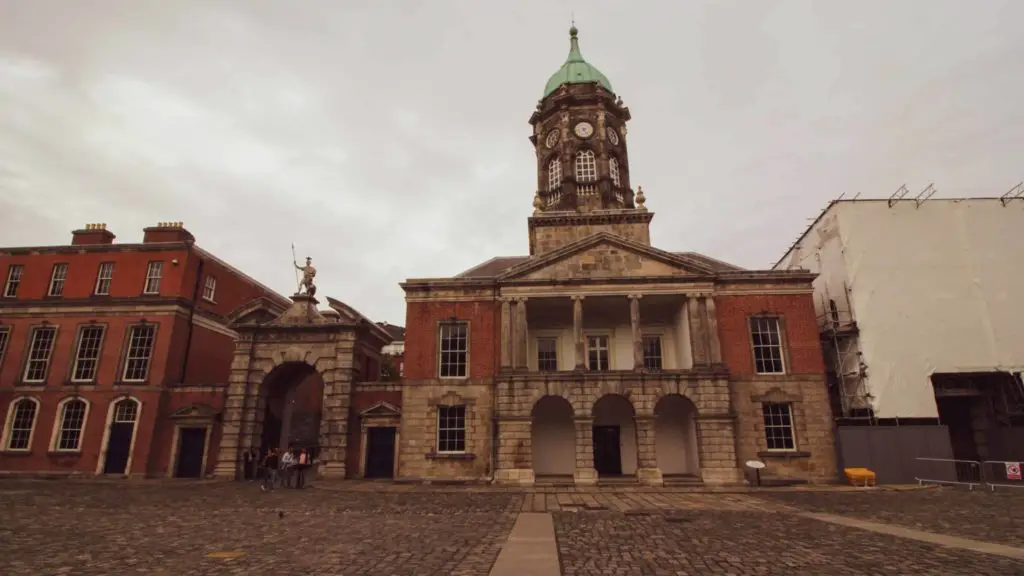
Get a Look at Chapel Royal
The Chapel Royal contains one of Ireland’s most elegant Gothic revival interiors. It was also the official Church of Ireland chapel of the Household of the Lord Lieutenant from 1814 until 1922 when the Irish Free State was created.
Pay a Quick Visit at Chester Beatty ☘️
The Chester Beatty Library is another famous attraction you must see during your Dublin two days tour. It’s home to ancient manuscripts, artworks, and rare books collected by Sir Alfred Chester Beatty throughout his life.
The library was established in 1950 and given to the state upon his death. In the collection, you’ll find some of the earliest known copies of the four gospels, 200 early examples of the Qur’an, and the Gospel of Mani, which is thought to be the last remaining artifact of the religion of Manichaeism.
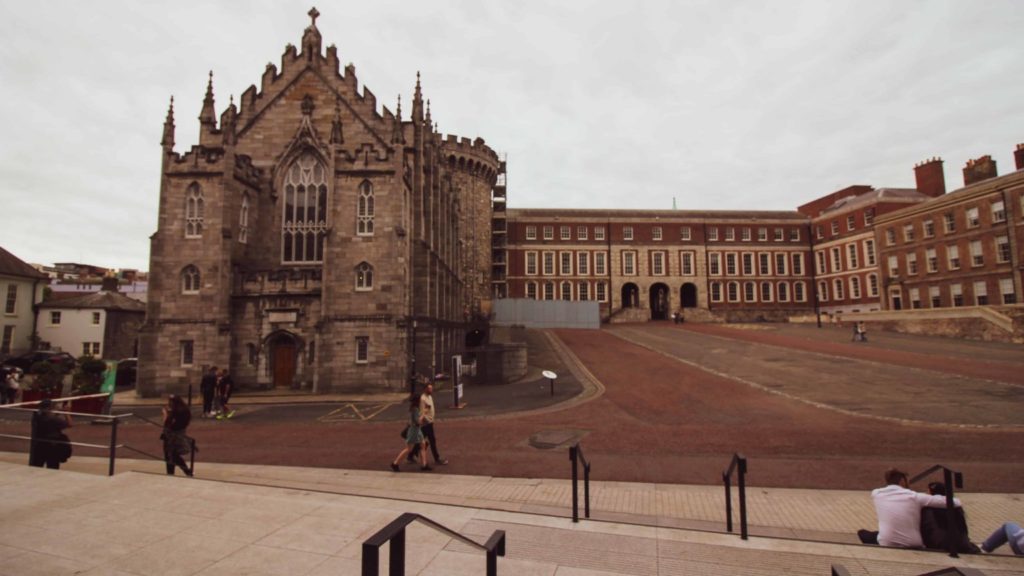
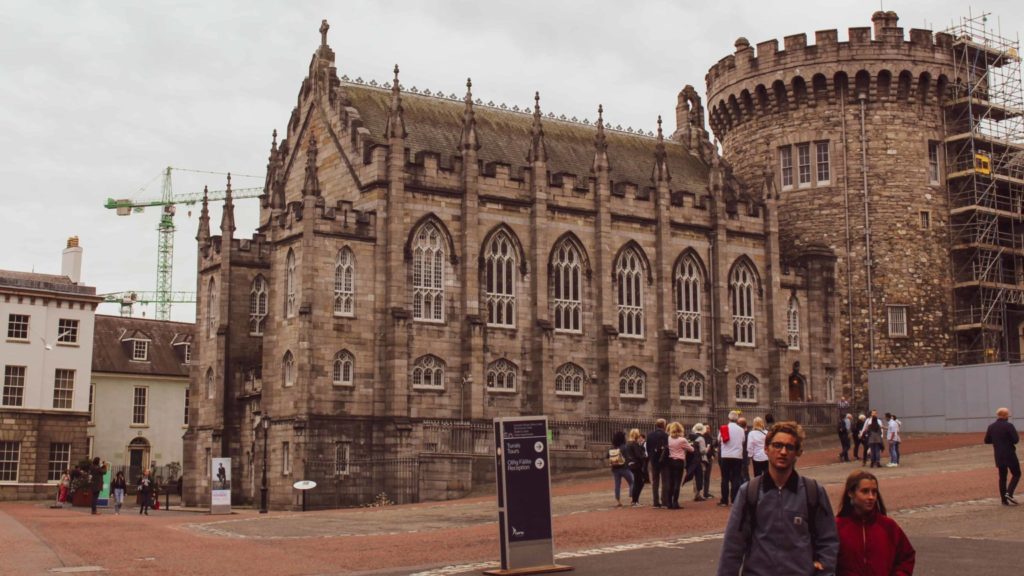
Gain Some Good Luck From The Molly Malone Statue
Molly Malone is a fictional fishmonger featured in a well-known Irish song, “In Dublin’s Fair City.” The song is acknowledged as Dublin’s unofficial anthem and was immortalized in bronze during the 1988 Dublin Millennium celebrations.
While her statue’s location is regularly used for meetups, some believe touching her breasts will bring you good luck. It’s one of the fun things to do in Dubin.
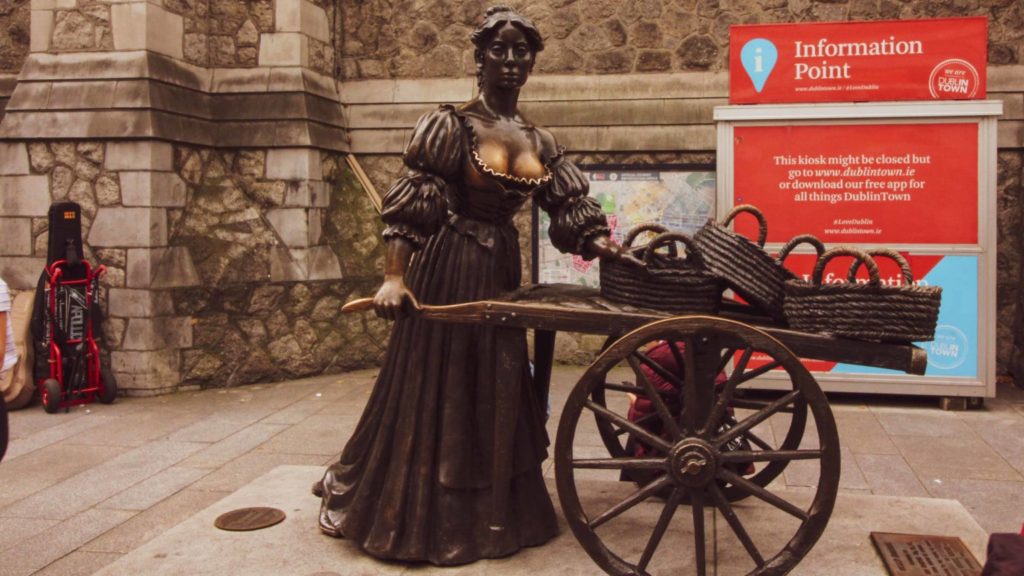
Dinner in Grafton Street
Grafton Street is one of two shopping streets here in Dublin. It runs from St. Stephen’s Green to College Green. In 2008, it was voted the fifth most expensive street in the world, but that aside, it is the perfect place to grab dinner before heading back to The Temple Bar neighbourhood for drinks and some festive nightlife!
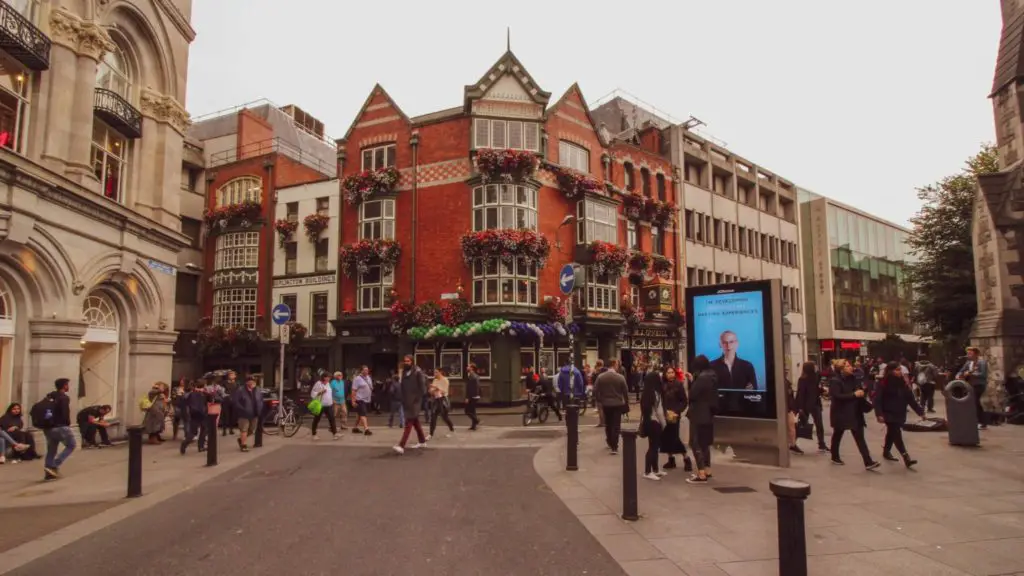
Finish Your Evening at Dakota Bar
Dakota Bar opened in June 2000 and has become one of Dublin’s most popular late-night party bars. By day, the bar serves fine, freshly made food, and every Friday, Saturday, and Bank Holiday Sunday night, you’ll find top DJs playing.
Dakota Bar offers the public the best in quality food, drinks, and service – give it a try during your two days in Dublin. The manager recognized my Toronto accent and told us that she was Canadian and was living in Ireland on a work visa. We Canadians always tend to find each other!
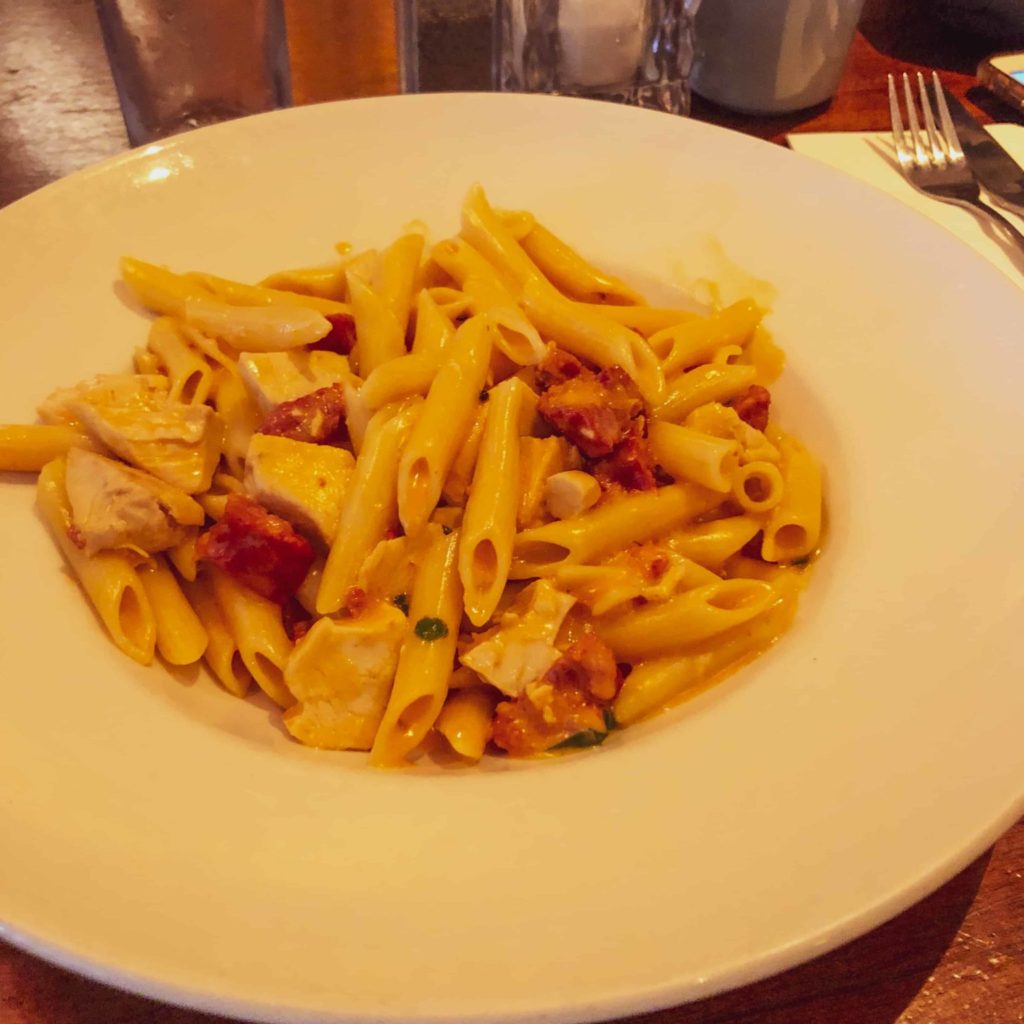
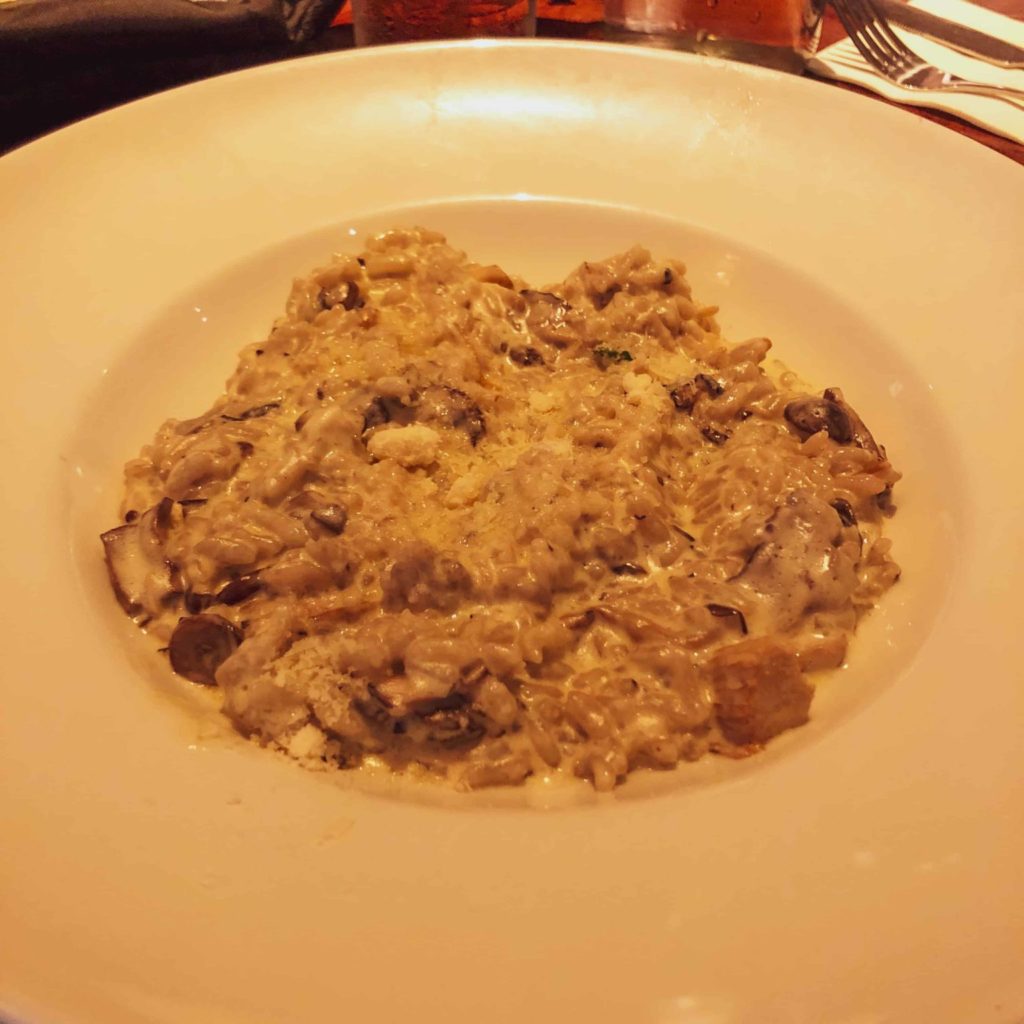
Dublin Itinerary, Day 2:
Day one of our Dublin 2-day itinerary was undoubtedly packed with attractions and fun Irish experiences. Now that all the heavy lifting is complete, it’s time to drink and tour and drink some more!
The 48-Hour Dublin Pass and the 24-Hour Hop-On-Hop-Off with Big Bus Tours Dublin can assist heavily on this mission through Dublin.
**I’ve also indicated the bus stop or the nearest bus stop with this symbol: “🚍 “**
Tour Drimnagh Castle
Our Airbnb was located in a southern Dublin suburb, which worked out in our favour as it was close to Drimnagh Castle. Ireland’s only moated castle is authentically medieval, with over 700 years of history.
You’ll find a beautiful and immaculately maintained garden with herbs and other medicinal plants. You can even purchase limited amounts of Drimnagh Castle Honey produced on the grounds at certain times of the year.
In the gardens and courtyard, you’ll also find a portrait of Lady Eleanora de Barnewall, who is rumoured to have been a maid, a bride, and a widow all in one day. They say she still haunts the castle today.
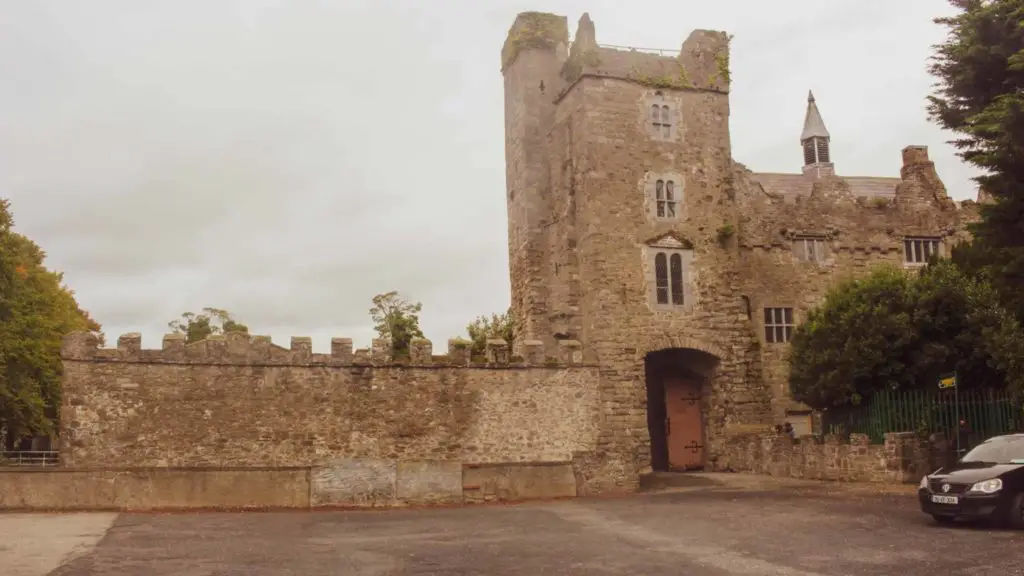
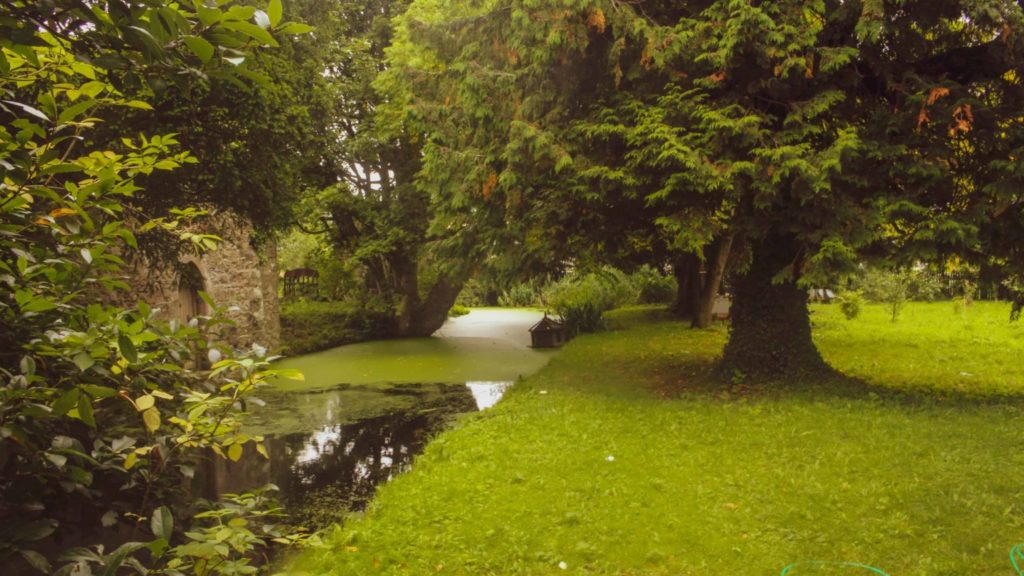
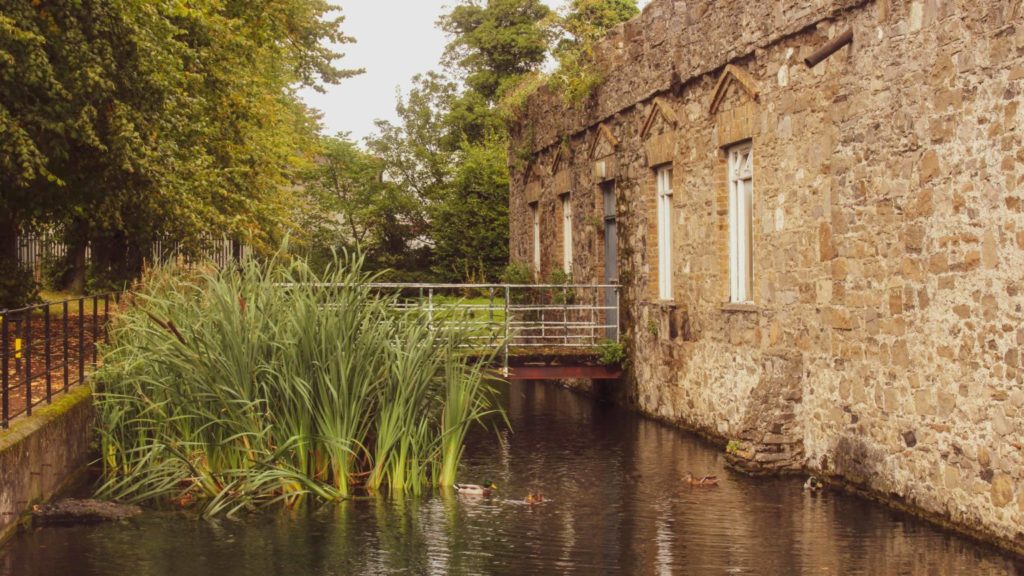
Learn a Thing or Two at Teeling Whiskey Distillery ☘️🚍
The Teeling Whiskey Distillery is the first new distillery to be opened here, in Dublin, for over 125 years. However, it’s technically just up the road from where Walter Teeling – the current owner’s ancestor – first set up a small craft distillery back in 1782.
The Distillery offers visitors a unique insight into the production process of Irish whiskey through its guided tours. You can learn about the artistry of whiskey making, from selecting the finest grains to their slow maturation in oak barrels over many years. You can also sample some of their delicious whiskey while experiencing how it is made through intricate processes such as continuous pot stills, rectification, ageing and blending.
Tip: You can save time and book a tour online too.
Take a Tour of St. James’s Gate | Guinness Storehouse ☘️🚍
Guinness has always been, if not my favourite beer, definitely one of my favourite beers. The black stuff has had a hold on me for quite some time now. I’m enjoying one right now as I write this.
It should come as no surprise that one of the best things to do during your Dublin two-day itinerary is to visit the Guinness Storehouse. One of St James’s Gate Brewery sites is where the legendary drink has been brewed since 1759.
Get this, over 50 million barrels of Guinness are produced annually from this location. If that wasn’t enough, they have a seven-storey visitor attraction shaped like a traditional Guinness glass.
The tour takes you through all seven floors and covers everything from how the famed Guinness beer is made to some of the brand’s most iconic advertising.
Tip: The 48-Hour Dublin Pass will get you in fast and past the line; however, if you’re not in a rush, taking a guided tour will do well too. Just be prepared to spend a few hours here and plan accordingly.


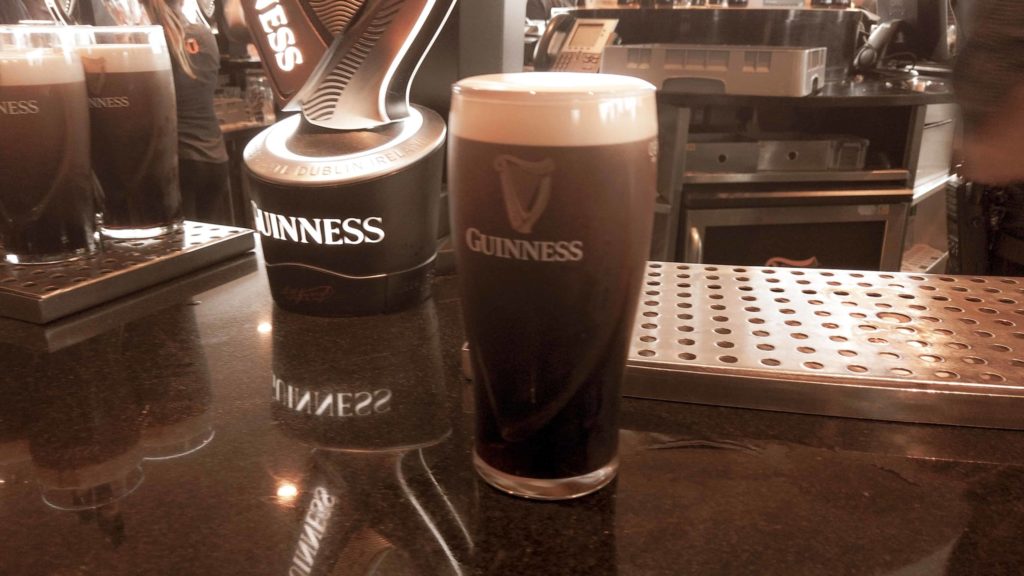
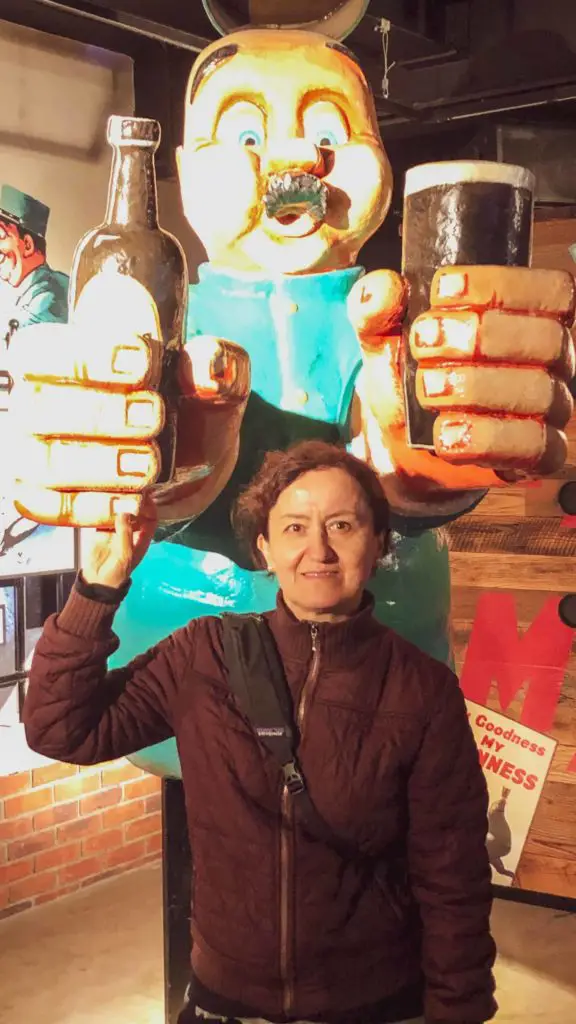
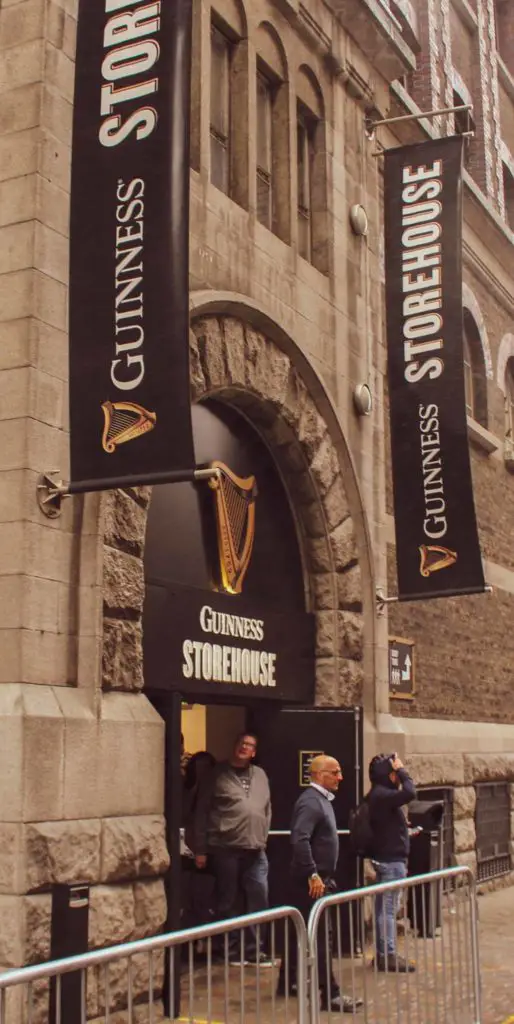
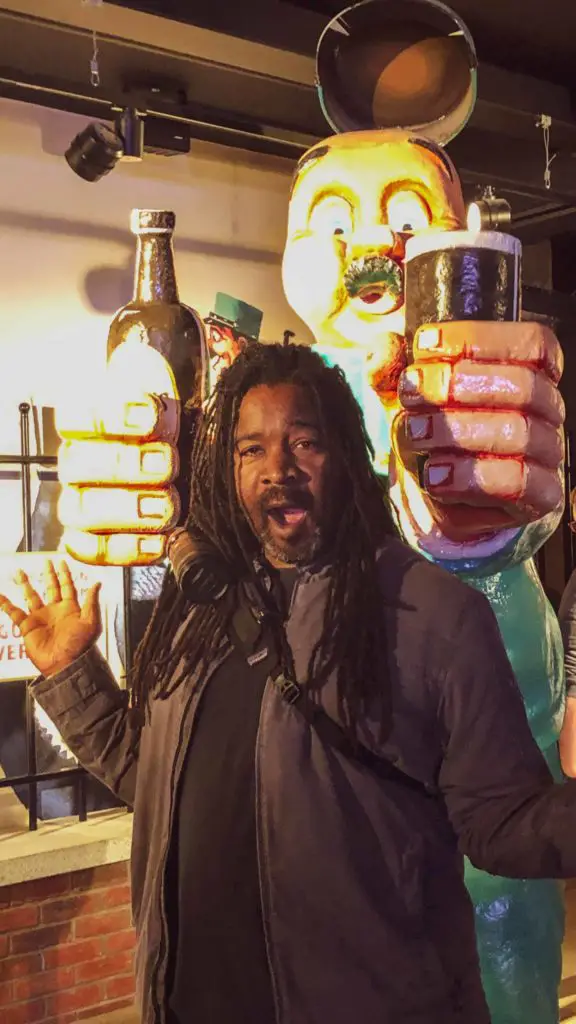
Dive Into The History of Kilmainham Gaol 🚍
Kilmainham Gaol is a former prison that opened in 1796 as the new County Gaol for Dublin and closed in 1924. During this time, the jail saw many faces come and go.
Several leaders of the rebel uprisings that occurred in 1798 and 1916 were detained or, in some cases, executed here. Members of the Irish Republican movement from the Anglo-Irish War, which took place between 1919 and 1921, were also held here and guarded by British troops.
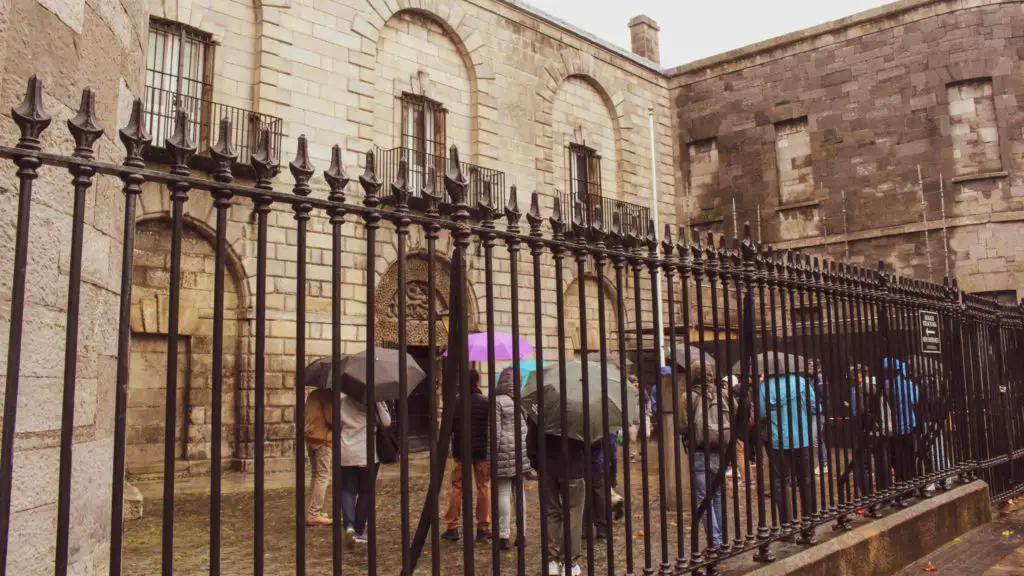
Today the Kilmainham Gaol building offers guided tours managed by timed tickets. The tour tells the stories of militant and constitutional nationalism, like the rebellion of 1798 and the Irish Civil War of 1922-23, and the men jailed here.
**The Kilmainham Gaol is a top-rated site to visit on your Dublin in 2 days itinerary. The Dublin Pass does not cover it; thus, fast-tracking is unavailable. Tours of this venue book fast, so secure your ticket before your visit.**
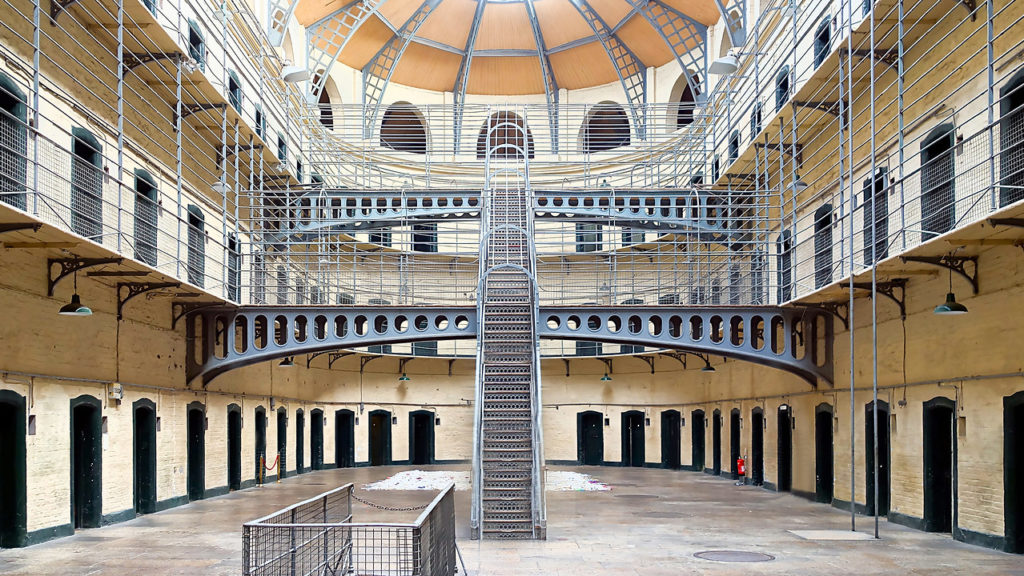
Discover The Wonders at Phoenix Park 🚍
Phoenix Park is the largest enclosed public park in Europe. It was initially formed as a royal hunting Park in 1660 and was then opened to the public in 1747.
Visitors to Phoenix Park can enjoy various activities, like boating on the lake or going for an invigorating walk on miles of trails. The park is also host to frequent concerts and events throughout the year.
Inside, you’ll find Zoological Gardens, Áras an Uachtaráin, and Victorian flower gardens. You’ll also discover Ashtown Castle, a tower house built in the 14th century.
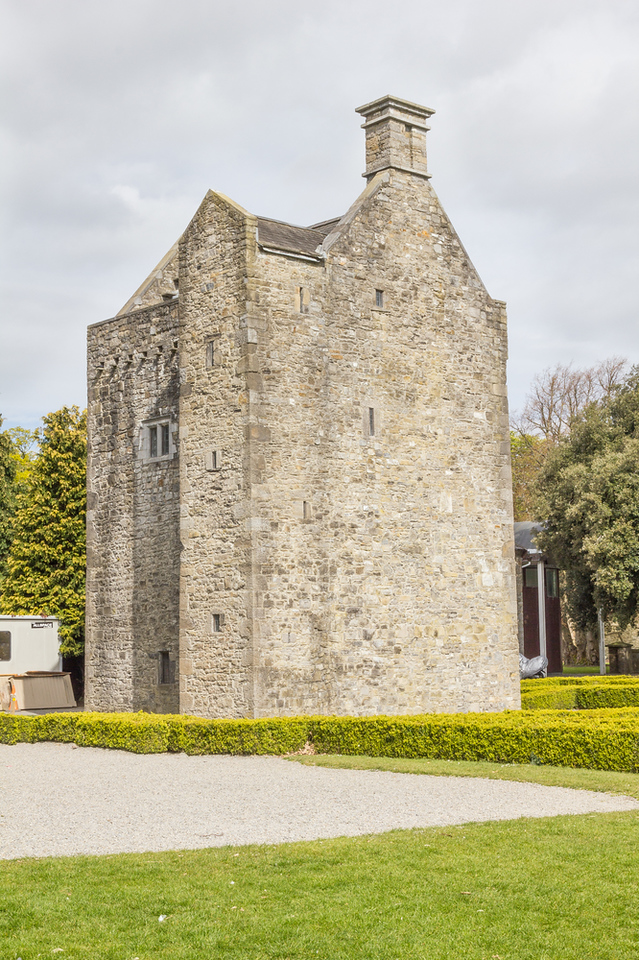
Do a Tasting at Jameson Distillery ☘️
(Nearest stop is Arran Quay 🚍)
Jameson Distillery has been producing blended Irish whiskey for over two centuries. To put it in perspective, they’ve been making whiskey through two world wars, an Irish civil war, and even American prohibition – hence the family motto “Sine Metu,” Latin for “Without Fear,” which can be found in their logo.
Since 1780 John Jameson has perfected the triple-distilled process for its smooth-tasting Irish whiskey. The Bow St. Experience will teach you – through tasting, all about whiskey and what makes Jameson unique. You can opt to try Whiskey Cocktail Making or the Whiskey Blending Class while you’re there.
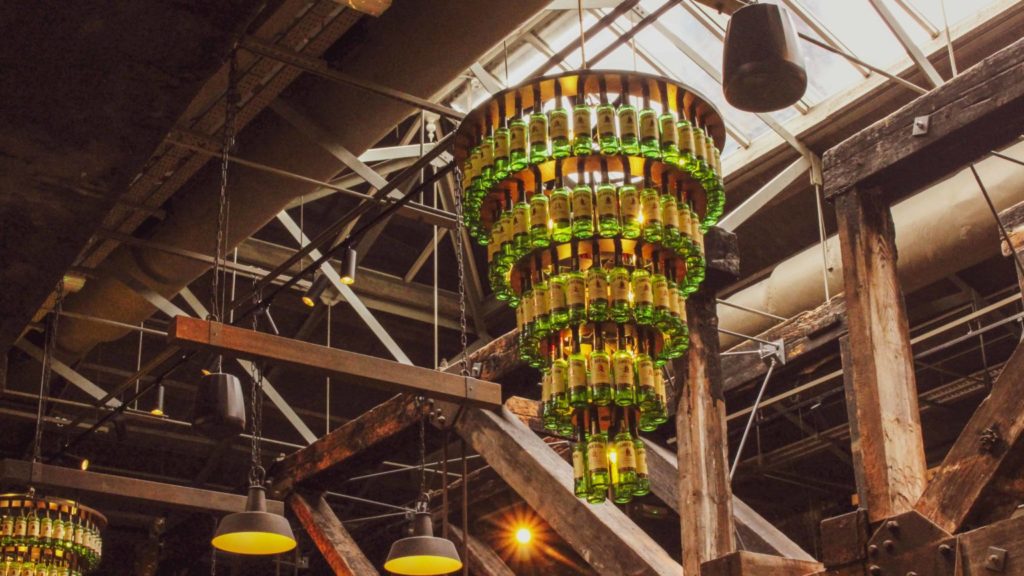
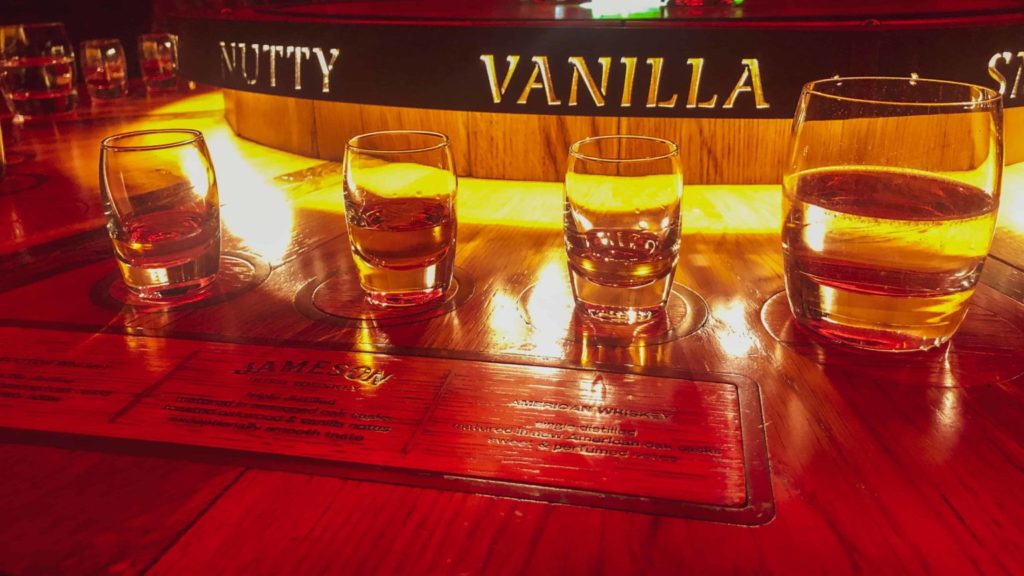
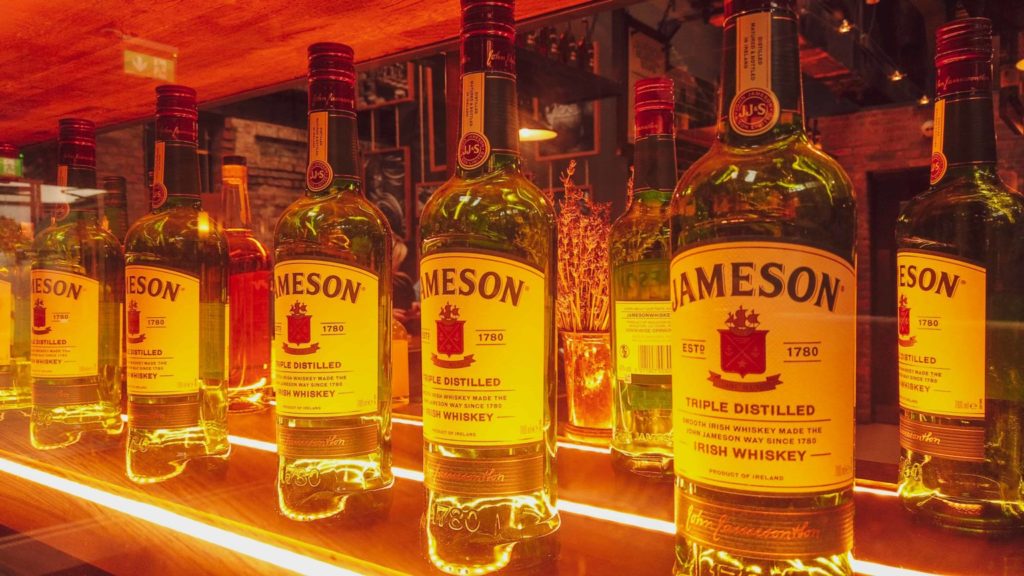
Learn a Few New Things at The Church Cafe | Bar | Restaurant
The Church is located in the former St. Mary’s Church, built at the beginning of the 18th century. St. Mary’s closed in 1964 and lay abandoned for several years until John Keating purchased it in 1997.
Over seven years, it underwent extensive restoration and eventually re-opened its doors in December 2005 as John M. Keating’s Bar. In September 2007, the building was acquired by new owners and renamed “The Church Bar & Restaurant.” You can quickly discover this attraction yourself with a self-guided tour.
Want to learn an interesting fact about this place? Arthur Guinness, the founder of the Guinness Brewery, was married here in 1761.
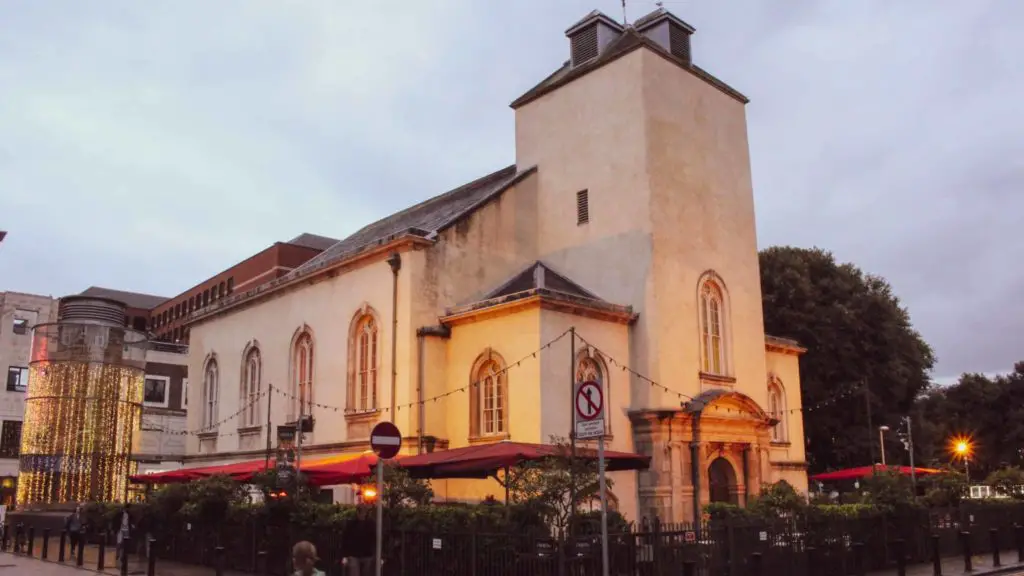
Lunch at Epic The Irish Emigration Museum & Chq Dublin ☘️
Located in CHQ Dublin shopping plaza is EPIC, The Irish Emigration Museum, which tells the story of Irish heritage. The museum delves into what drove the Irish to emigrate, the process, and what they did for themselves in their final destination.
This is an interactive tour, where you are issued a passport at the start of the tour and collect stamps as you move through the story. This makes for a truly unique experience.
Discover The Jeanie Johnston Tallship & Famine Experience ☘️
Across the street from the Irish Emigration Museum is the Jeanie Johnston tall ship, a replica of Jeanie Johnston’s original. This three-masted ship was built to carry cargo between Ireland and North America during the Irish Famine.
However, Jeanie Johnston was used to transporting emigrants from Ireland to the USA during the famine. Over a million people left the country, while an equal amount died in Ireland.
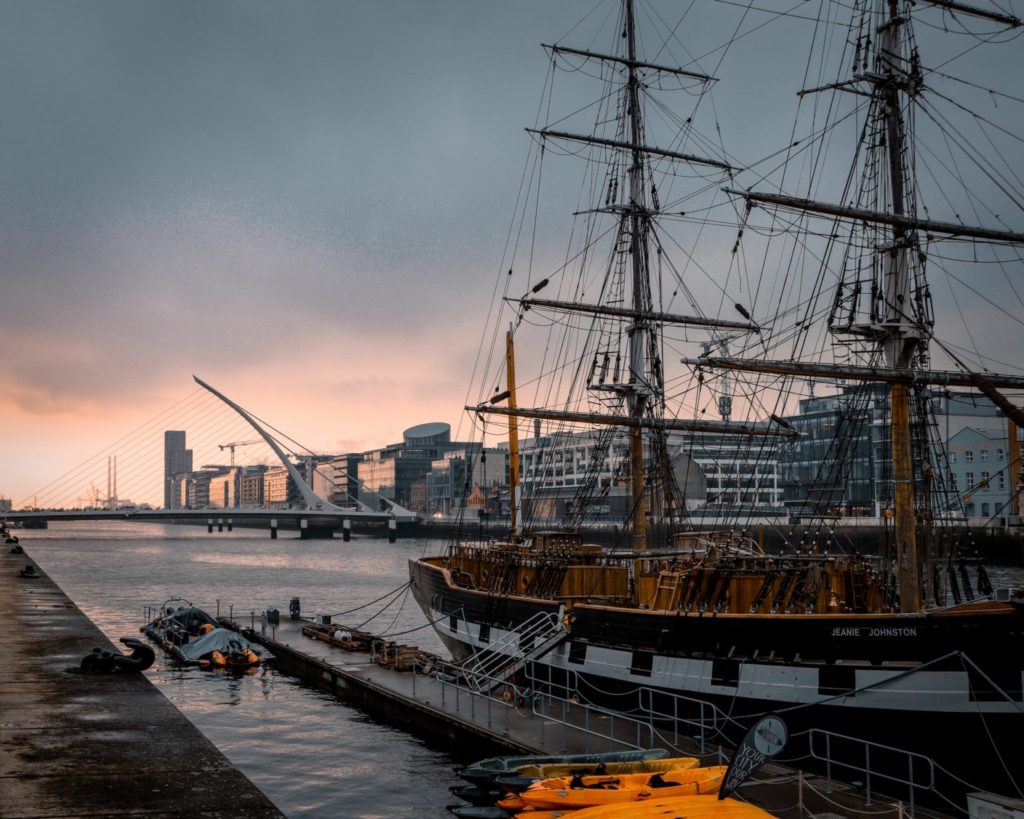
End Your Day at Arlington Hotel & Celtic Nights
The last stop was at the Arlington Hotel O’Connell Bridge for Celtic Nights, a lively mix of traditional Irish dance rhythms, ridiculously impressive footwork, and legendary Irish songs. The choreographed show includes the best in Irish dance, like the famous brush dance, “sean nos” (Old Style), and audience participation – all during a three-course meal.
This evening was the perfect cumulation of everything I’d learnt and loved about Dublin and Ireland. It was all happy people, good music, humorous dancing, and some outstanding food and Guinness.
Personal Suggestions:
- From the menu, Gordana and I started with Clonakilty Black Pudding en Croute and the evening’s freshly prepared soup.
- For the main course, Gordana went for the classic Irish Lamb Stew (Served with a puff pastry lid), and I went for the Beef & Guinness (Roasted Garlic Mash, Vegetable & Guinness Broth, Horseradish Cream, and Parsnips Crisps).
- We both went with the Arlington Assiette of desserts (Lemon Curd Tartlet, Chocolate Of Guinness Mousse & Strawberry Fool).
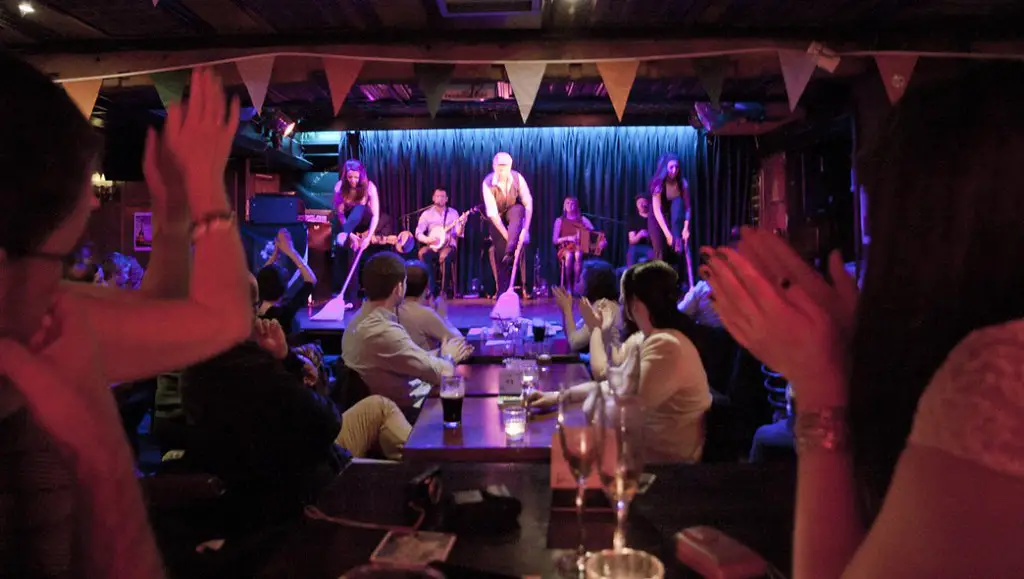
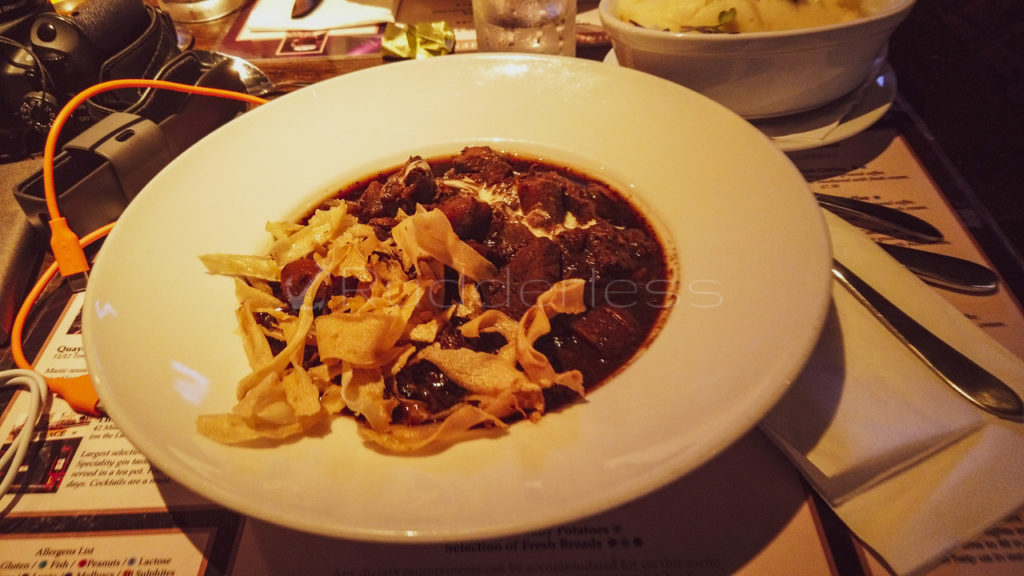
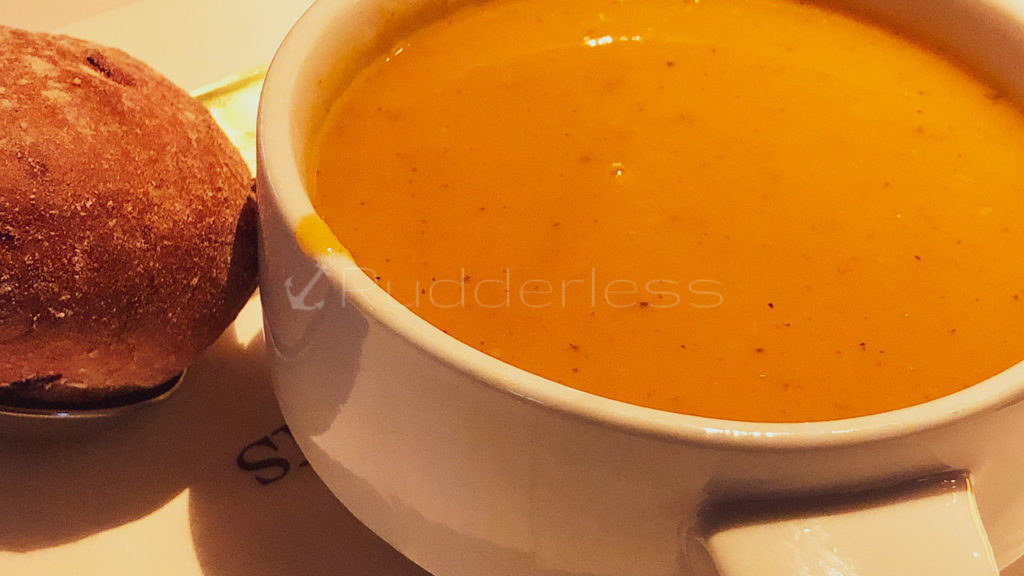
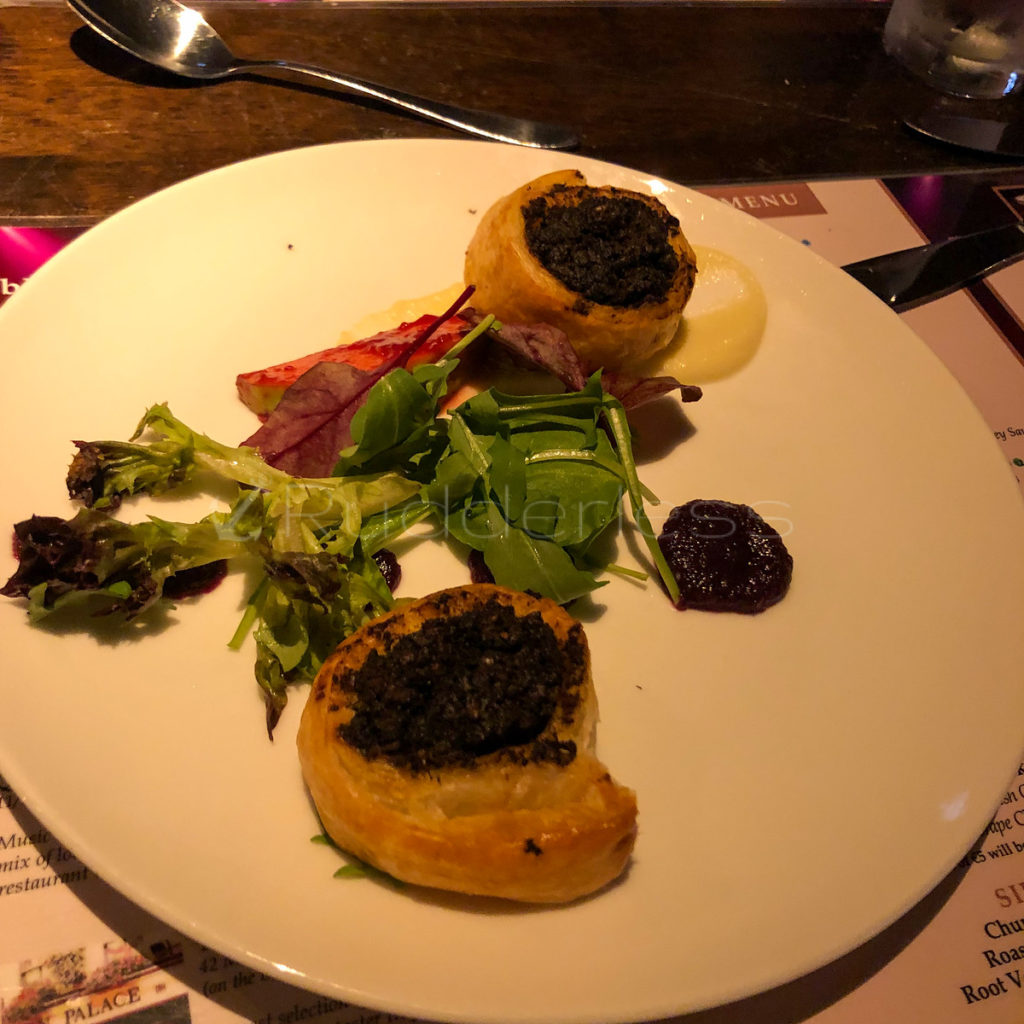
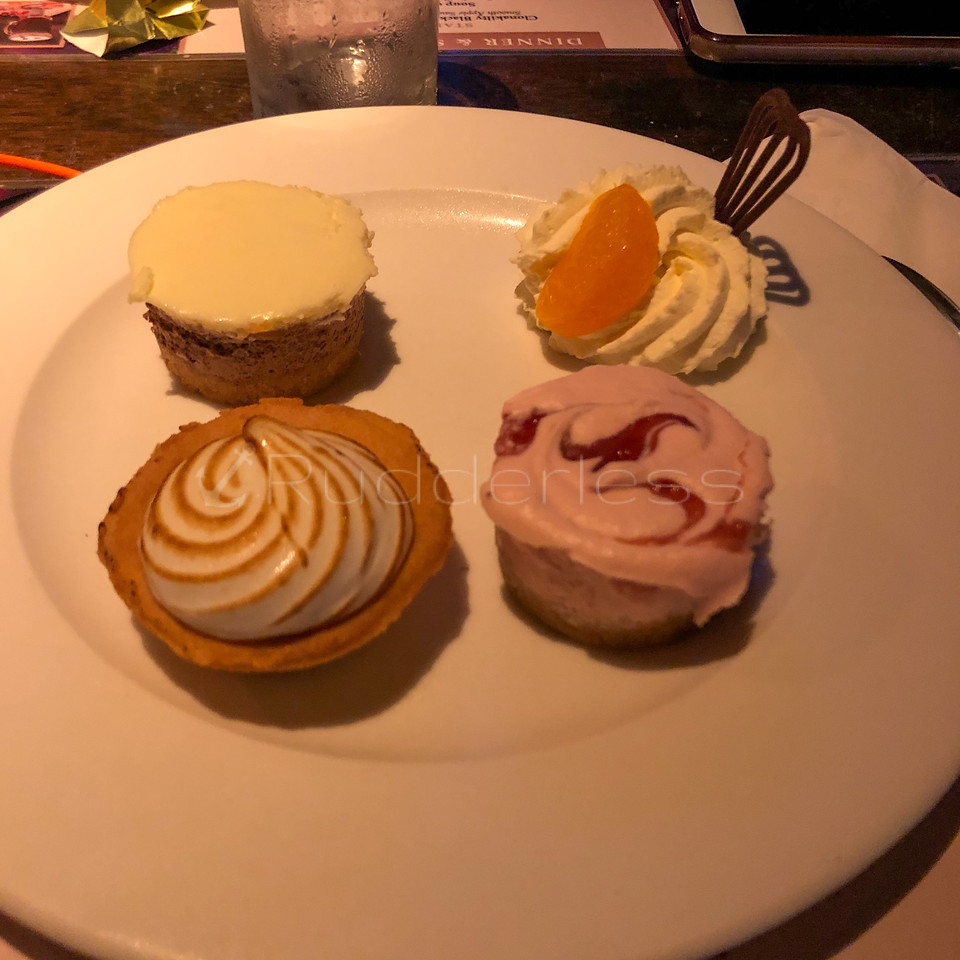
Experience The National Museum Of Ireland
(Nearest Stop Is Merrion Square🚍)
The National Museum of Ireland is a must-see destination for anyone visiting the Emerald Isle. Located in Dublin, this national institution houses incredible artifacts that tell the story of Ireland’s past and share its culture with visitors worldwide.
The museum was founded on August 14, 1877. Some exhibitions include the most beautiful collection of prehistoric gold artifacts in Western Europe, excellent examples of metalwork from the Celtic Iron Age, and a world-renowned collection of medieval religious objects and jewellery.
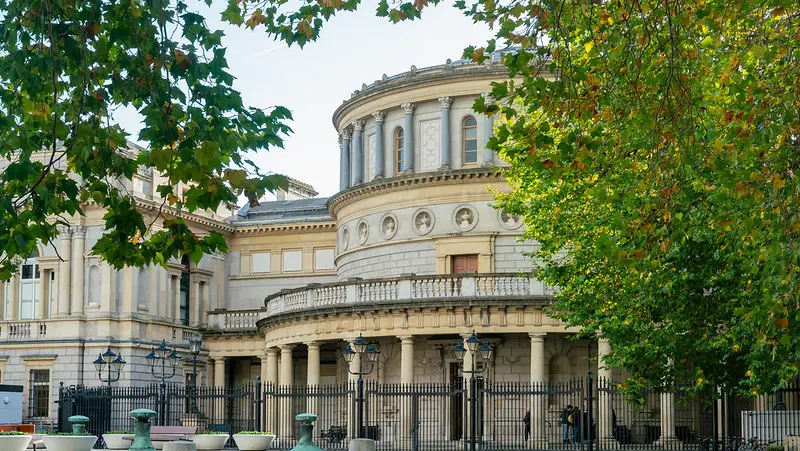
2-Day Dublin Itinerary Accommodations + Map
Getting To Dublin & The Emerald Isle
Each year, Ireland and Dublin become more and more accessible to tourists. Several airfare companies now fly in and out of Dublin – at an affordable rate too! Alternatively, a ferry runs between Holyhead in the UK and the Port of Dublin.
PLANE
You can get to Dublin Airport with Ireland’s Aer Lingus and Ryanair, Flybe, CityJet, and British Airways from the UK. Aer Lingus is based out of Terminal 2, while all other airlines use Terminal 1.
**Just a heads up, Ryanair is Ireland’s discounted airline, which tends to fly in and out of lesser popular airports. It seems to operate on an “everything is an upsell model.” If I hadn’t printed my boarding pass ahead of time, it would have cost me 20 euros. Luckily they waived it but be aware.**
GETTING TO & FROM THE AIRPORT
The blue Aircoach offers services between terminals 1 & 2 and a series of points within the city and southern suburbs. All coaches stop in the city centre on O’Connell Street and at Trinity College. It generally costs €8 one-way and €9 return if you purchase your tickets online or via their mobile app. Tickets bought on the bus may cost slightly more (about €1 more).
Airlink 747 offers a loop service between the airport terminals and various city centre stops. It usually costs €7 when bought on board the bus and €6 online.
FERRIES & BOATS
An excellent option for getting to Dublin Port is to take Irish Ferries or Stena Line, which takes two to three hours from Holyhead in the United Kingdom.
This is an excellent idea if you want to travel around Ireland in your car or van.
Dublin’s History
- In the days of 841, Vikings founded a new town called Dubh Linn (black pool) along the south bank of the Liffey river.
- Dublin was initially fortified with a ditch and earth rampart with wooden stakes forming a fence (otherwise known as a palisade).
- In the late 11th century, Dublin had stone walls erected around it. The Danes also established an artificial hill where the men would meet to make laws, debate, and discuss policy.
- As the Danes converted to Christianity, the first Bishop of Dublin was appointed in 1028.
- Throughout the several wars between Irishmen and Vikings, the town of Dublin was sacked several times. Dublin still grew to be the largest and most important town in Ireland, with a population of 4,000 – which is substantial considering the average settlements in the 11th century.
- In 1171, Henry II came to Dublin and declared the city the capital of Norman’s Irish territory and the Norman and English colony’s heart.
- In the mid-1600s, the English Civil War broke out. Many sided with the Gaelic Irish rebellion (which had started the prior year in 1641). However, the uprising failed. Eventually, Dublin became the second largest city of the English Empire during the 18th century through peace and stability.
- Since then, Dublin has seen much violence in its streets, with several rebellion attacks occurring.
- Eventually, Ireland cut its ties to the British Empire, with Dublin becoming a republic in 1949.
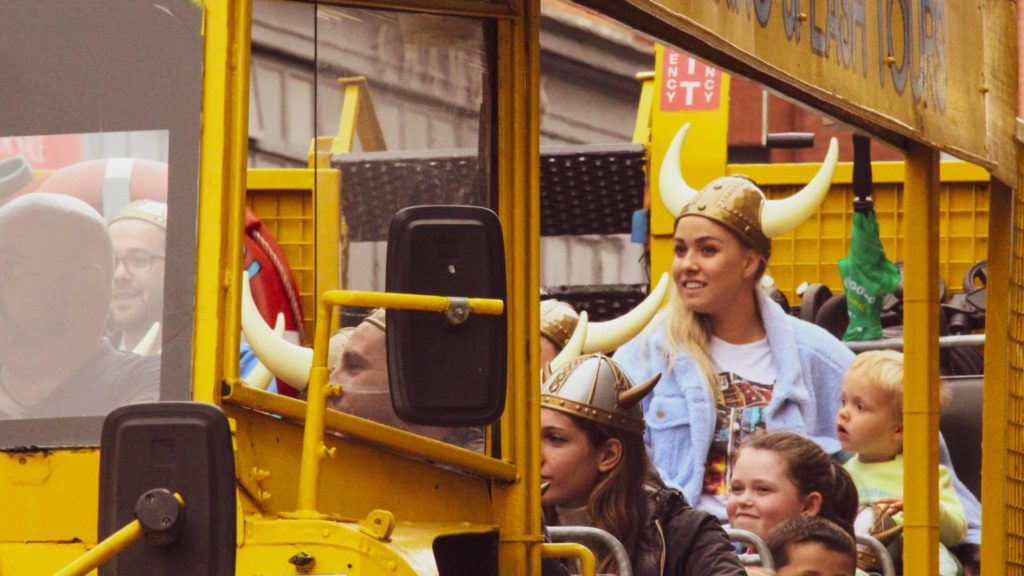
Best Time to Visit & Spend 48 Hours in Dublin
Dublin is a city renowned for its vibrant nightlife and range of cultural offerings. The best time to visit Dublin depends on what you’re looking for in your trip. If you’re looking for warm weather and sunny days, then the summer months (May-August) are ideal.
However, you’re looking to enjoy the city’s festive spirit. In that case, December is a beautiful time to be here, with Christmas markets lighting up the city and traditional Irish festivities taking place throughout the month.
Also, because it can be a bit crowded during peak tourist season, visiting between September and November can be a great time to explore Dublin without feeling overwhelmed by crowds. Whichever time you decide to visit, there’s sure to be something exciting happening in this bustling city.
A Note on Our Personal Dublin Weekend
At the start of our trip, I was more than excited to get started with this itinerary I had created, but things didn’t start that smoothly. We had landed in Dublin (after transferring through Paris from Zagreb), and I had been waiting for my suitcase to come off the belt when I realized it wasn’t happening. Gordana had her suitcase, but mine was missing.
Yes, I understand that luggage can get lost when changing flights, but for all the trips I’ve flown, I’ve only ever lost my luggage twice – both times were at Charles Airport in Paris. WTF!?!?
The good news was that my bag was scheduled to arrive the following day. The bad news was that we had to explore Dublin in 2 days and couldn’t waste a day hanging out at our Airbnb. Luckily my fantastic Airbnb host, Siobhan, insisted that we go out and explore her great city while she waited for my suitcase to arrive!
Final Thoughts on What to See in Dublin, Ireland, in 2 Days
One of the top things to see in Dublin, Ireland, is the Temple Bar neighbourhood, and as we strolled through, I saw a person in a penis costume. His friends paraded this penis throughout the city, wearing masks with his soon-to-be wife’s face imprinted on them. I laughed so hard that my gut started ache, but seeing this comical parade made me instantly forget about my suitcase!
Everything about Dublin seems joyful – the people, energy, vibe, music, dancing and even the way they talk seems happy. Their delicious and homely food certainly makes you feel very happy and content.
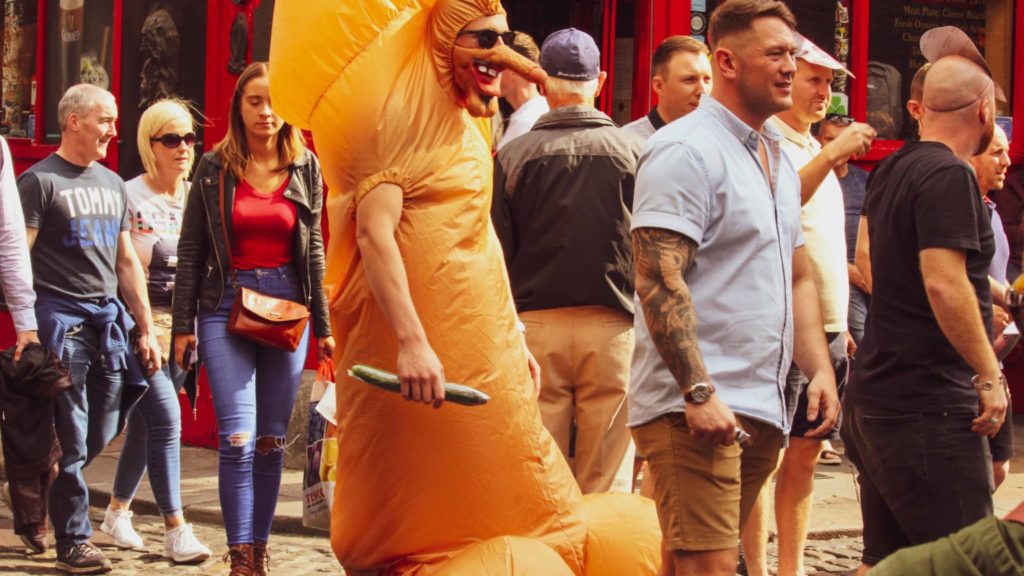
Is it the Jameson, Clonakilty Black Pudding, Irish Lamb Stew, Beef Guinness or just the renowned Guinness? Who knows? But it’s the type of place where cute little old grannies come tumbling out of bars, sloshed after 10:30 (True story – although I’m not sure if it’s a one-off or a regular occurrence).
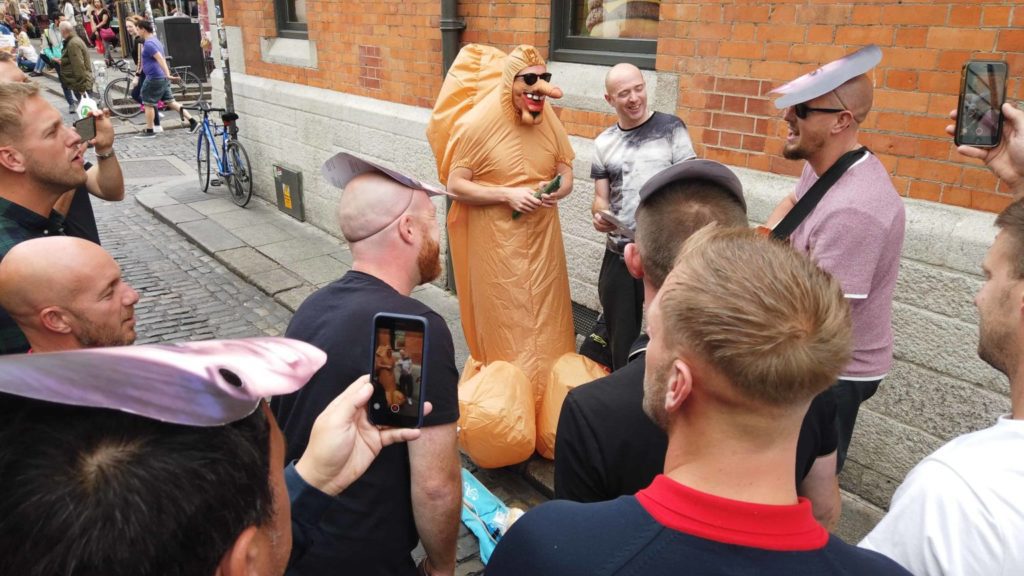
After having experienced Dublin and the Irish culture, I can understand how and why I fell in love with everything – the vibe, friendliness, language, and humour – about St. John’s and Fogo Island.
I love this city.
Sláinte (Cheers)
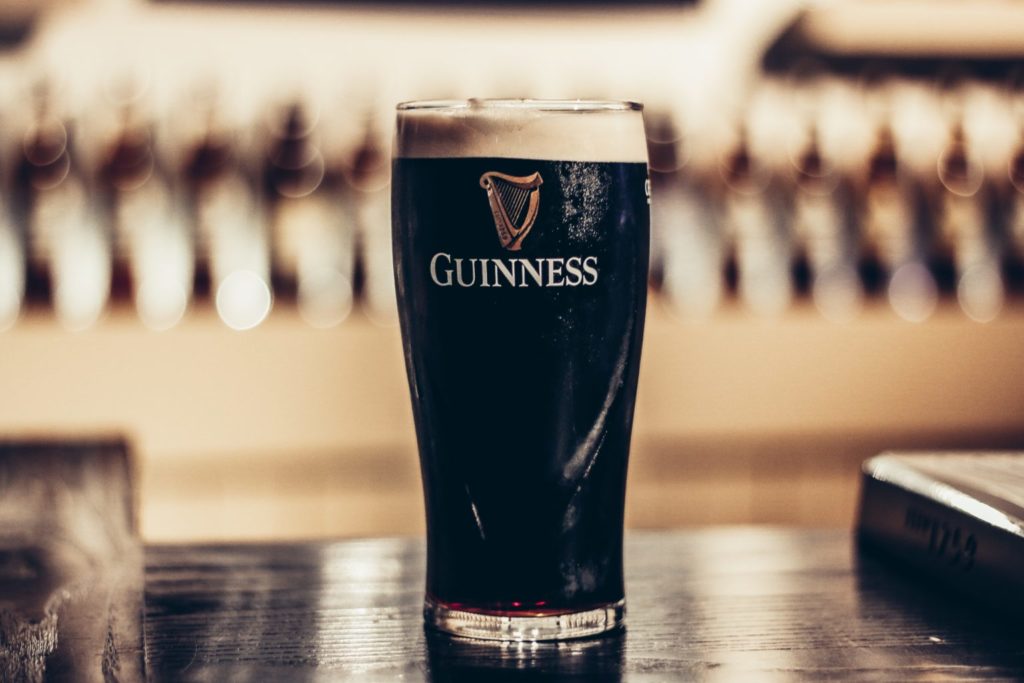

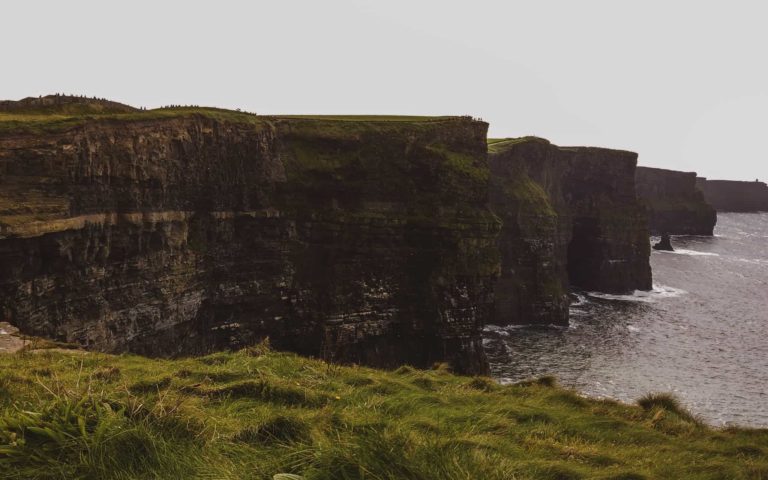
One Comment